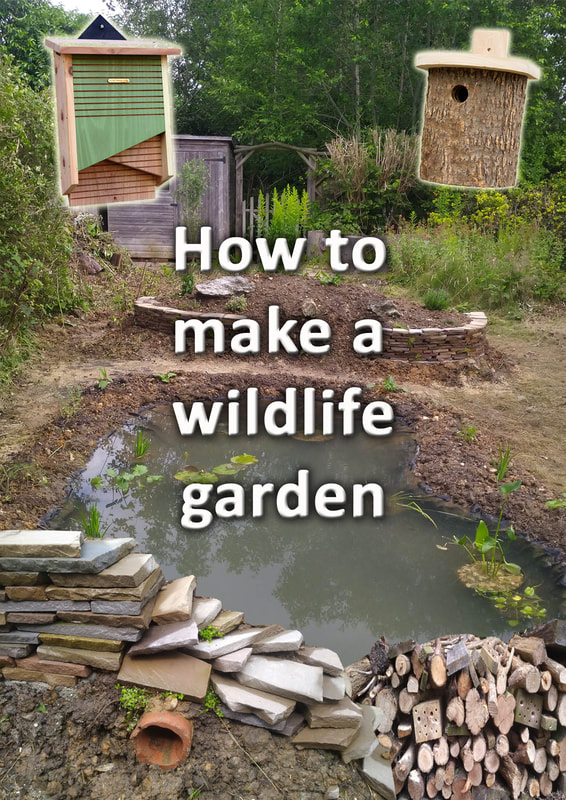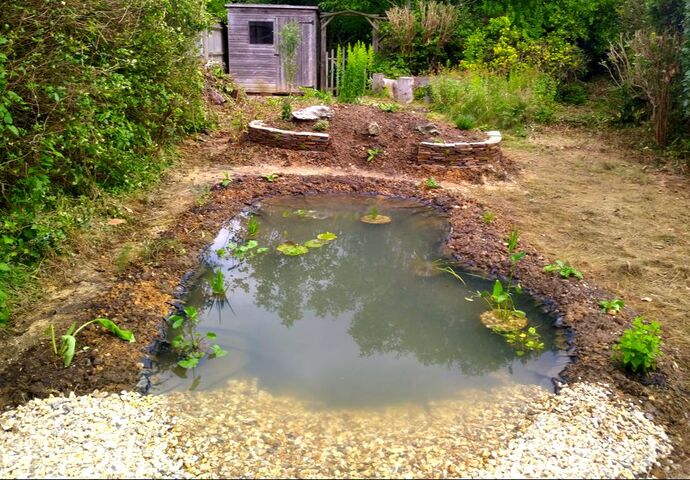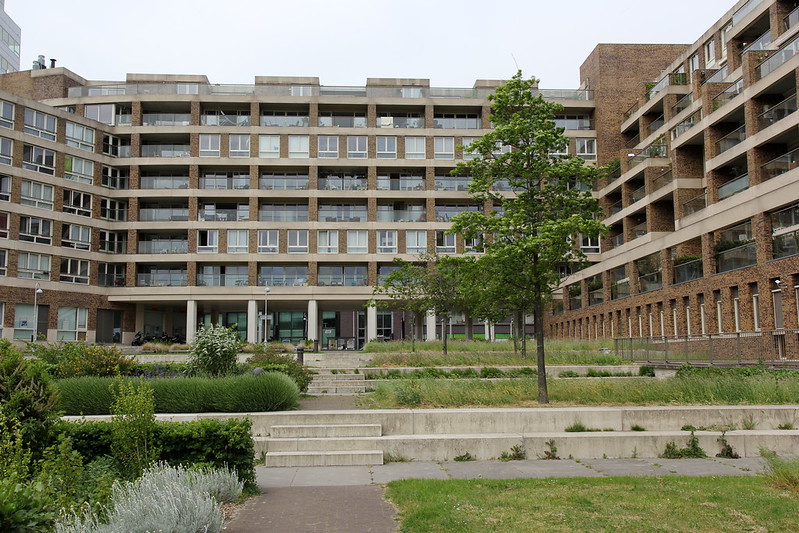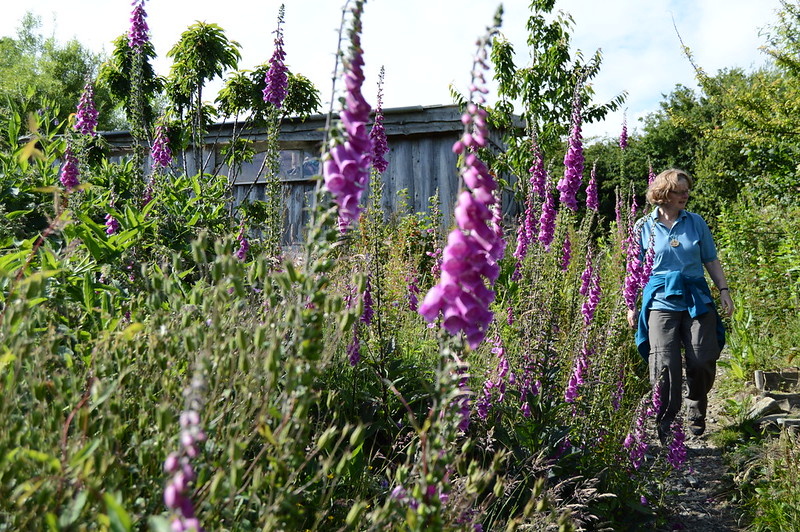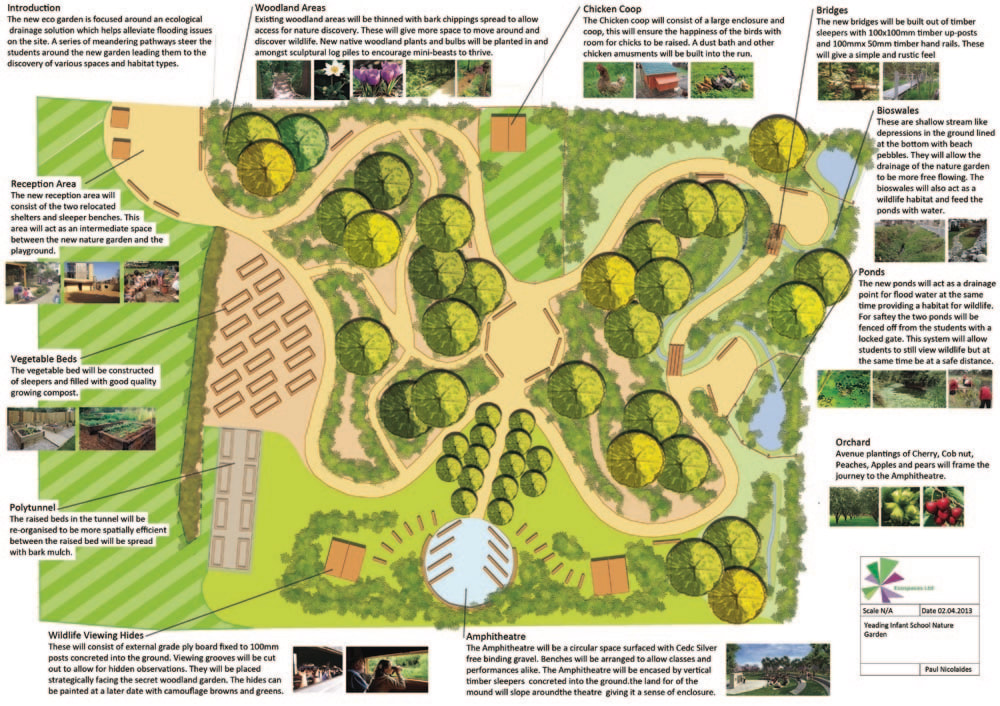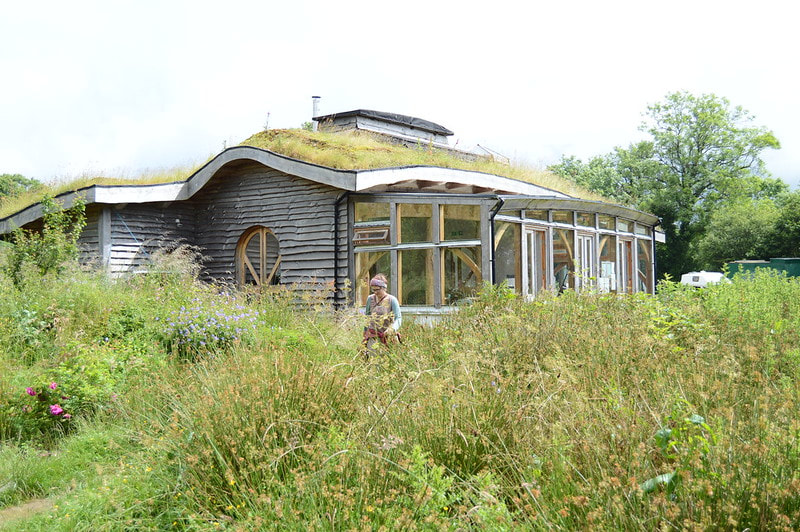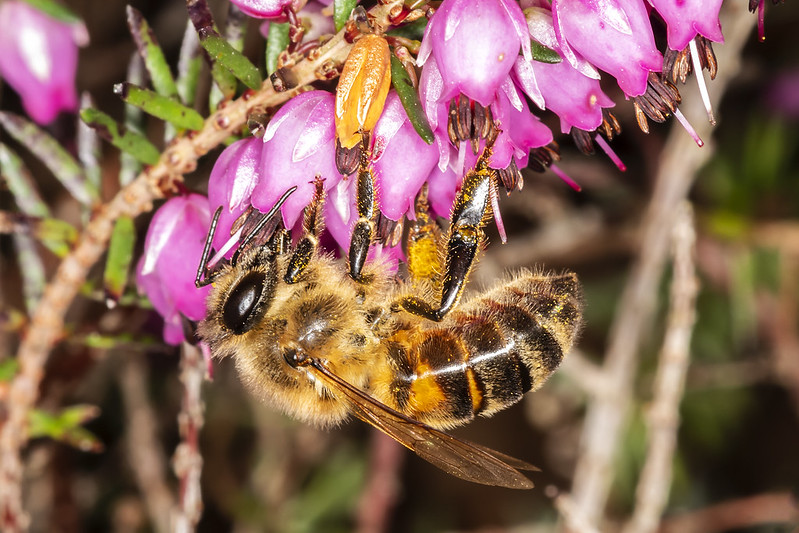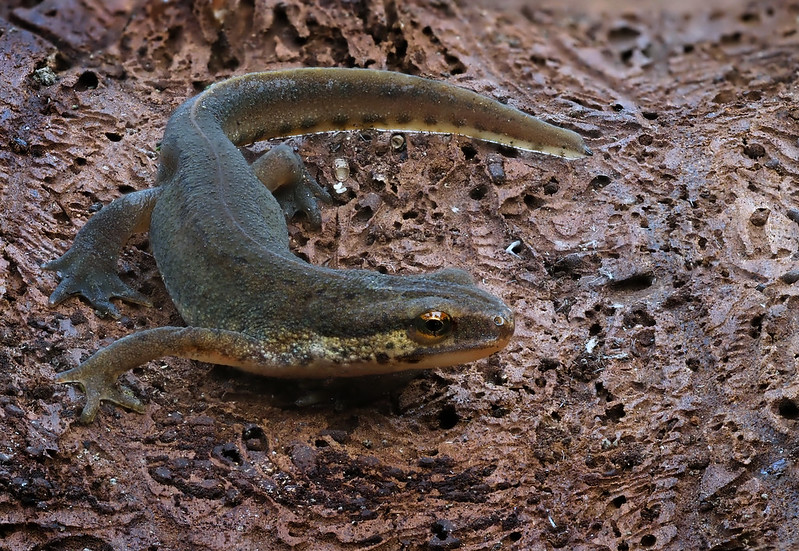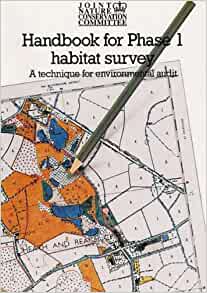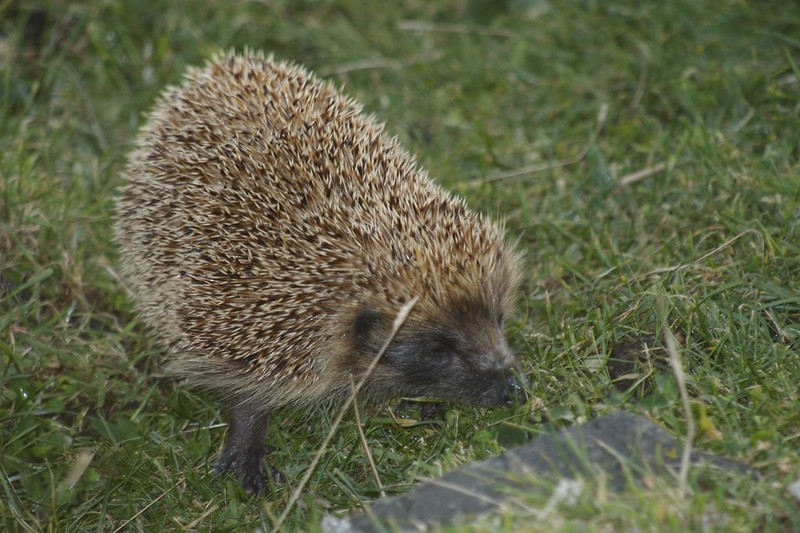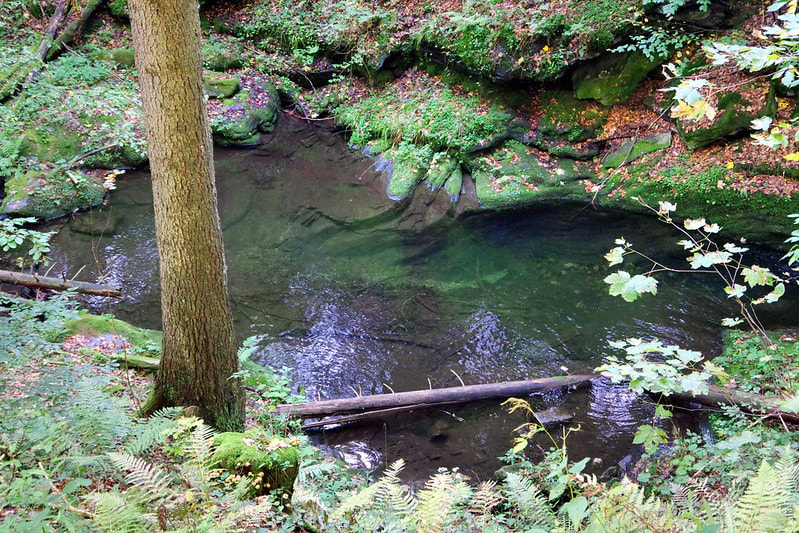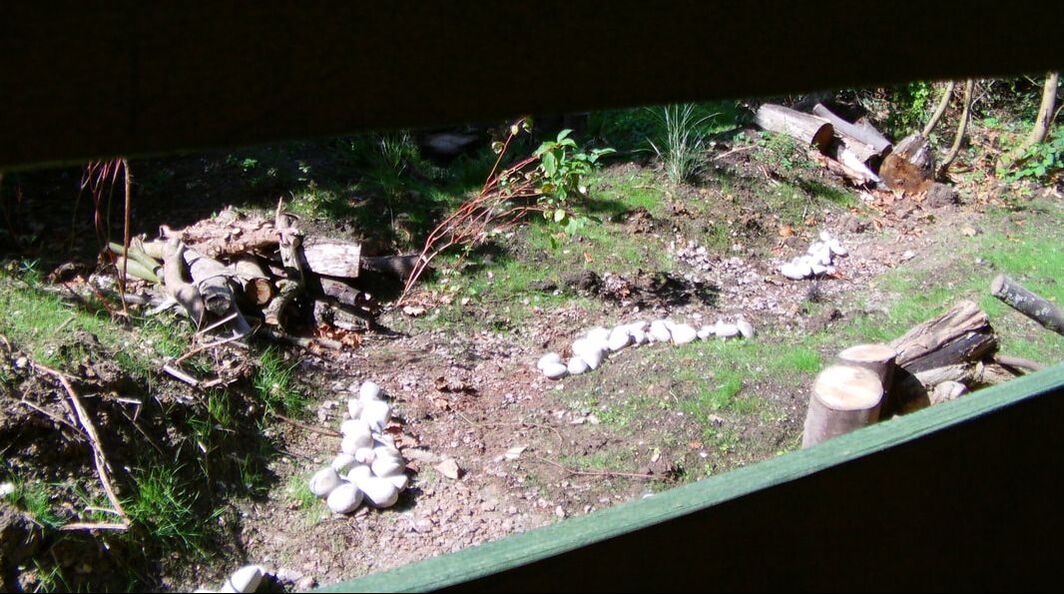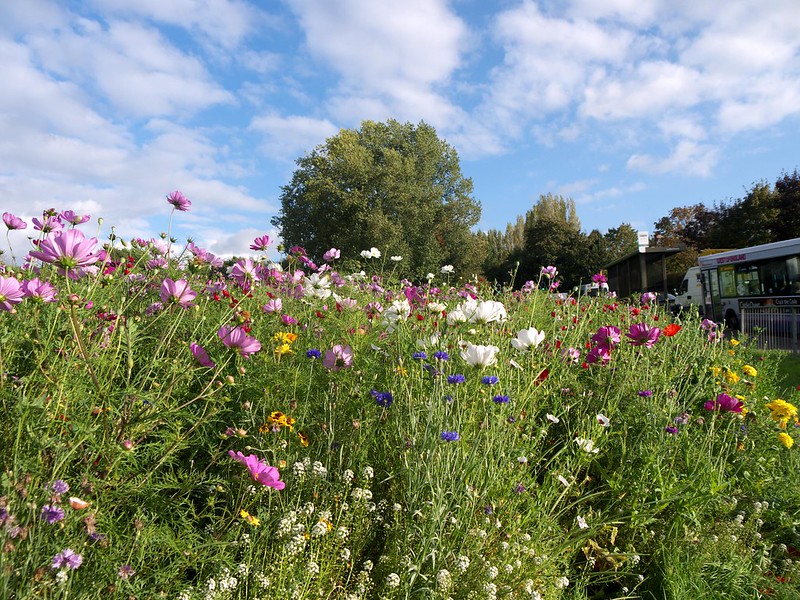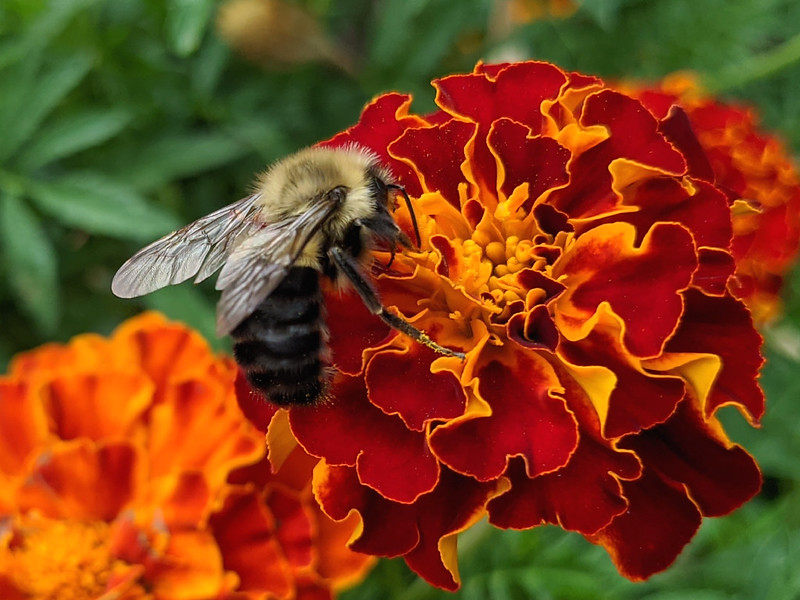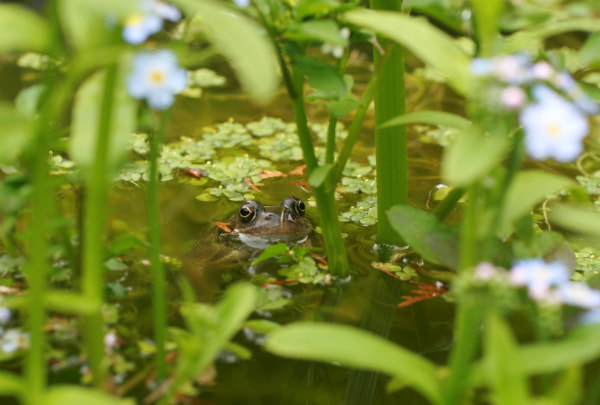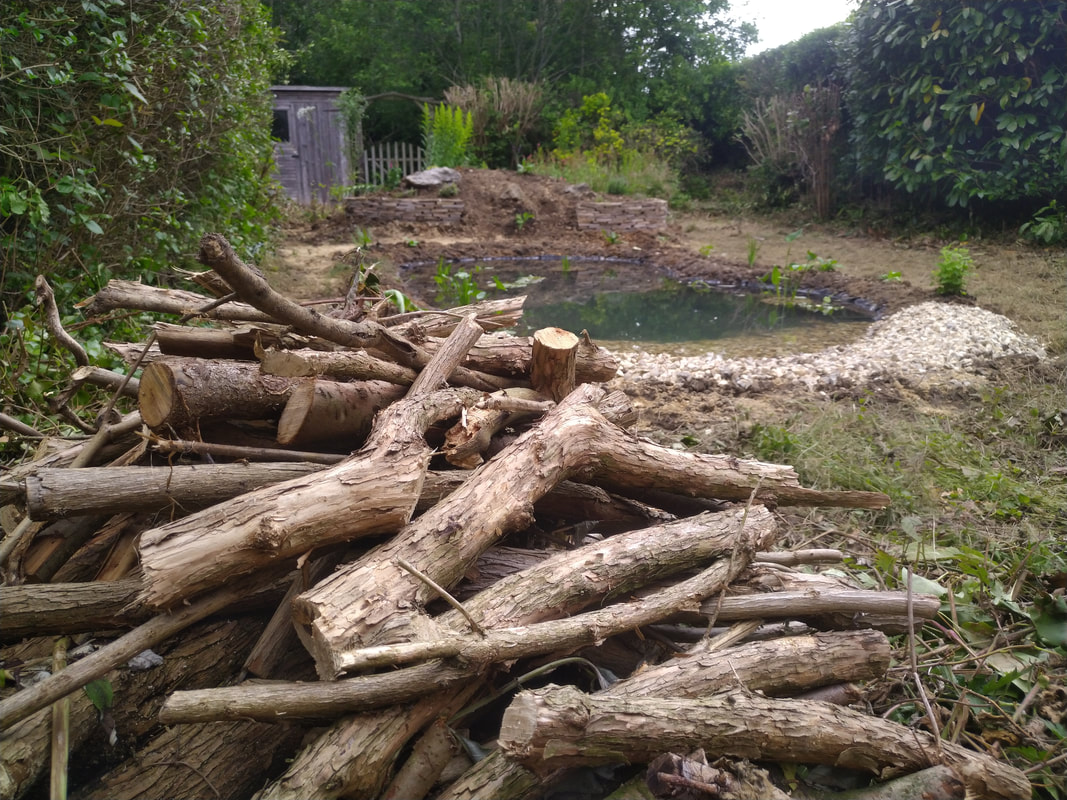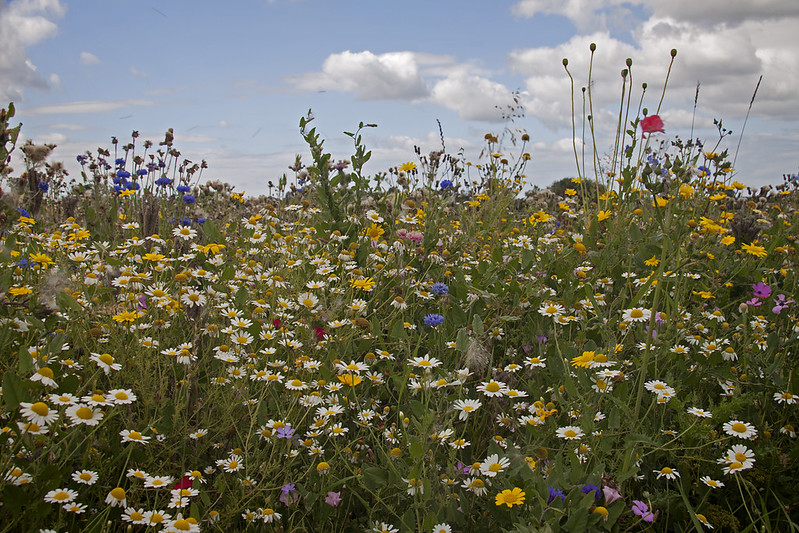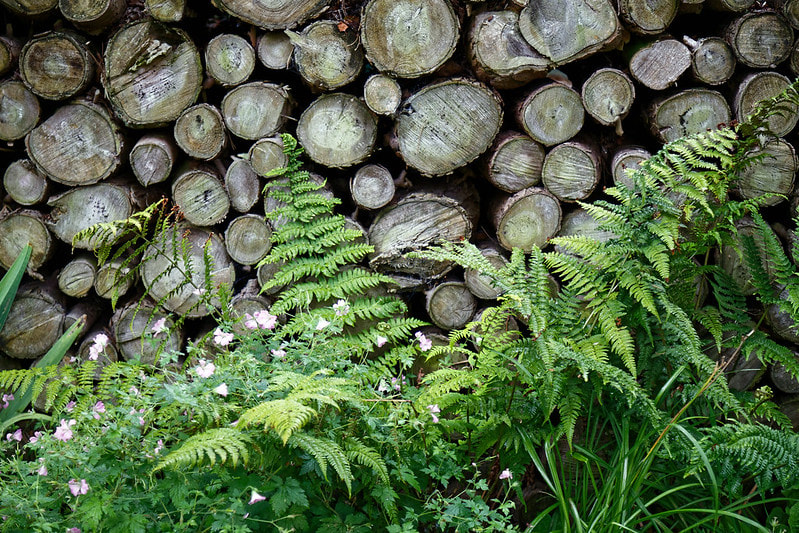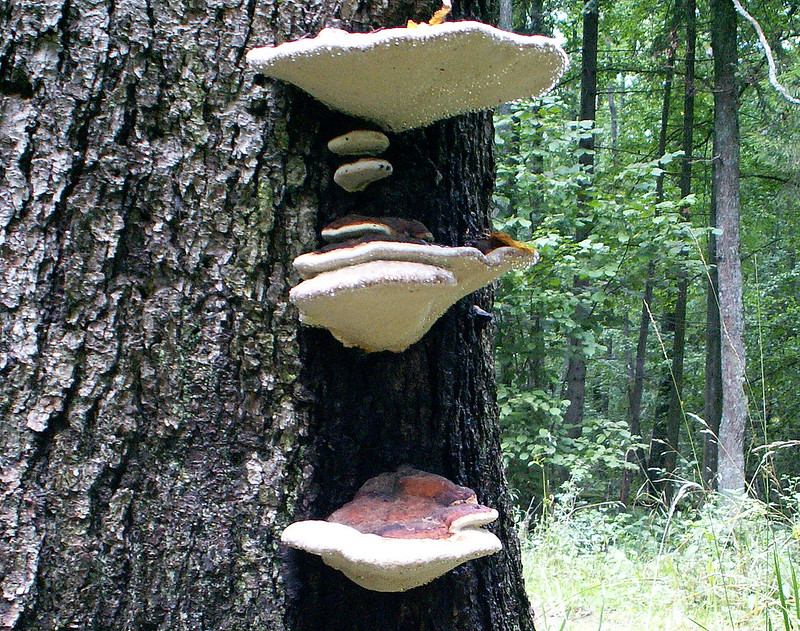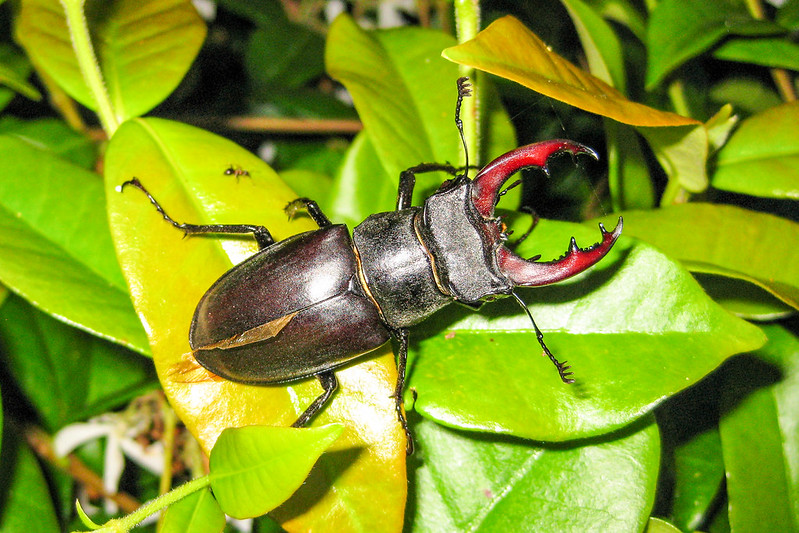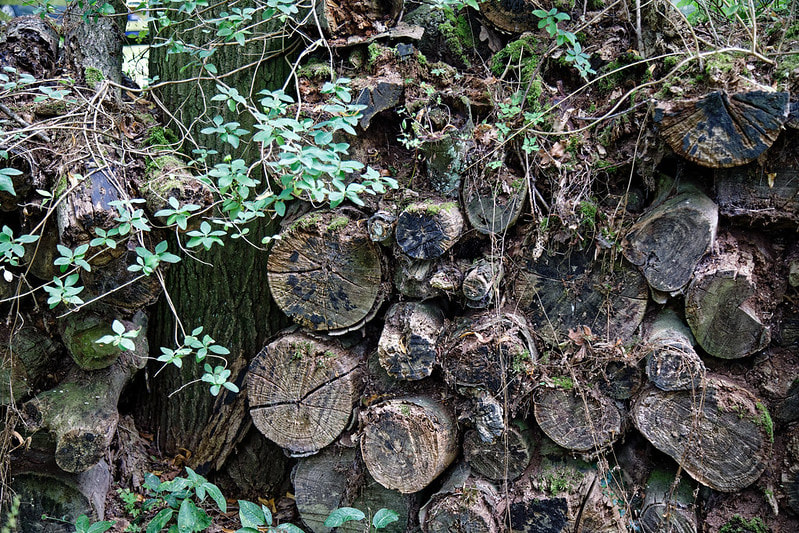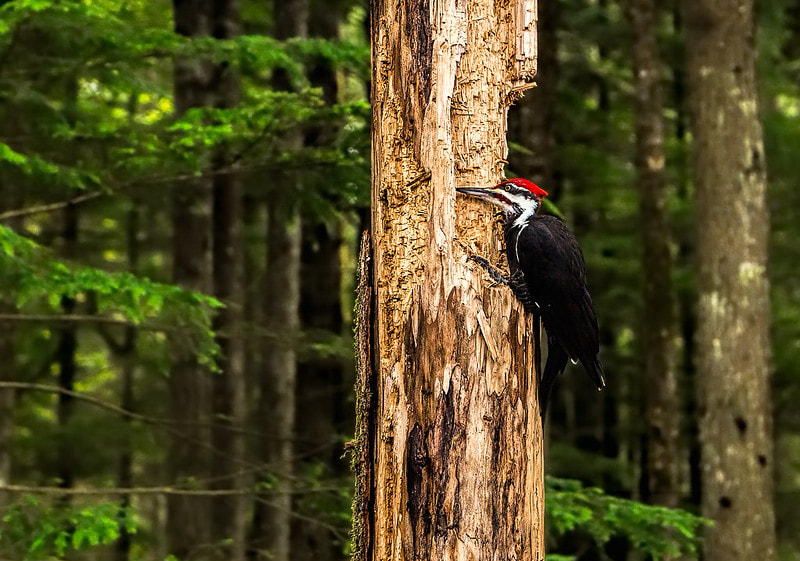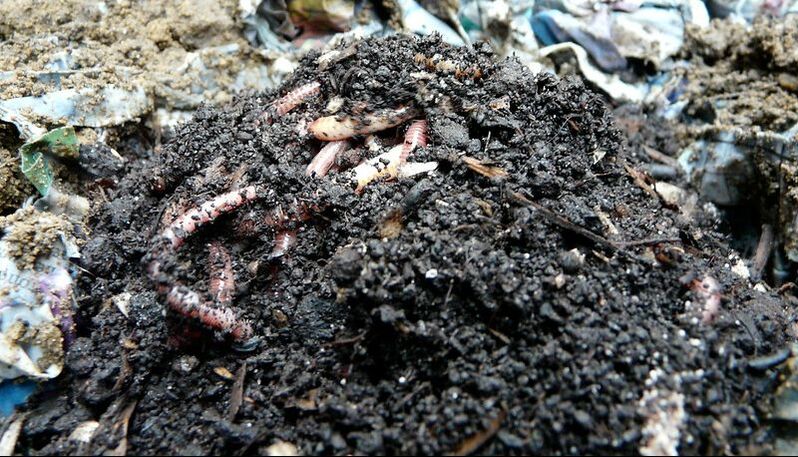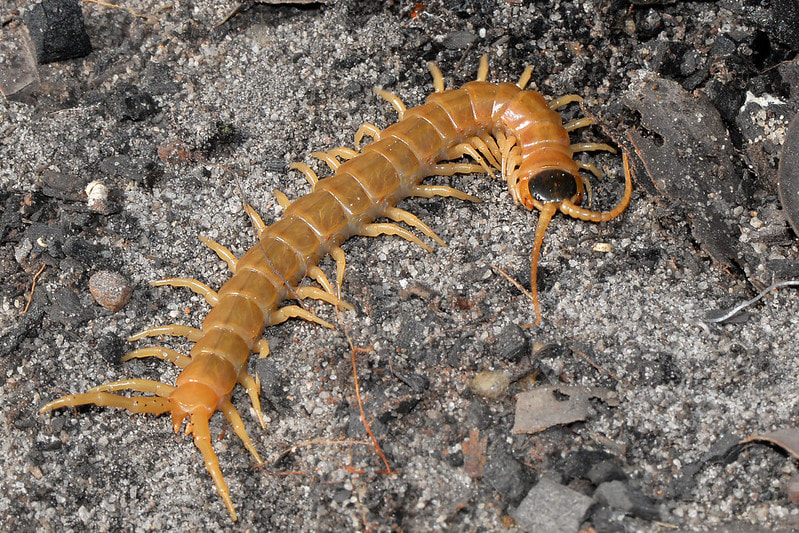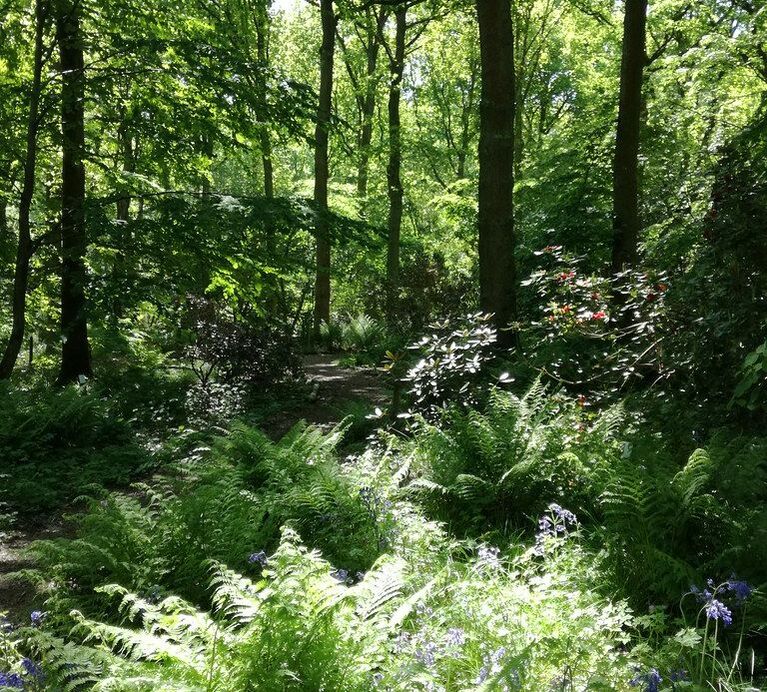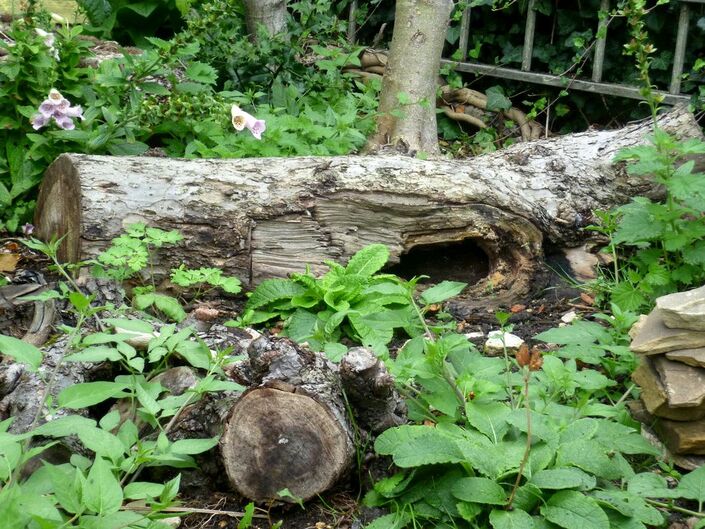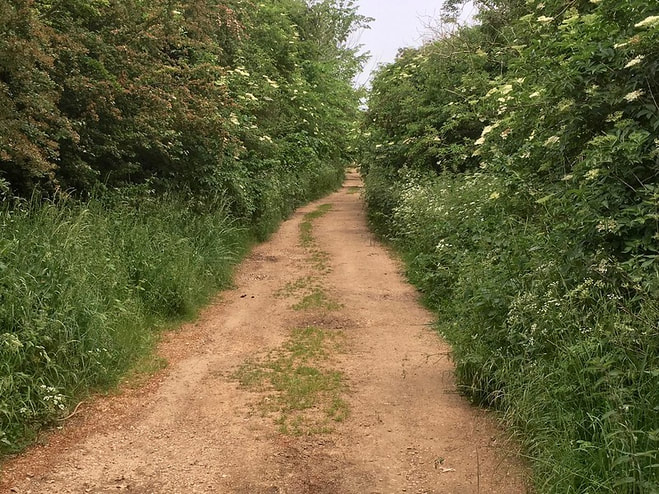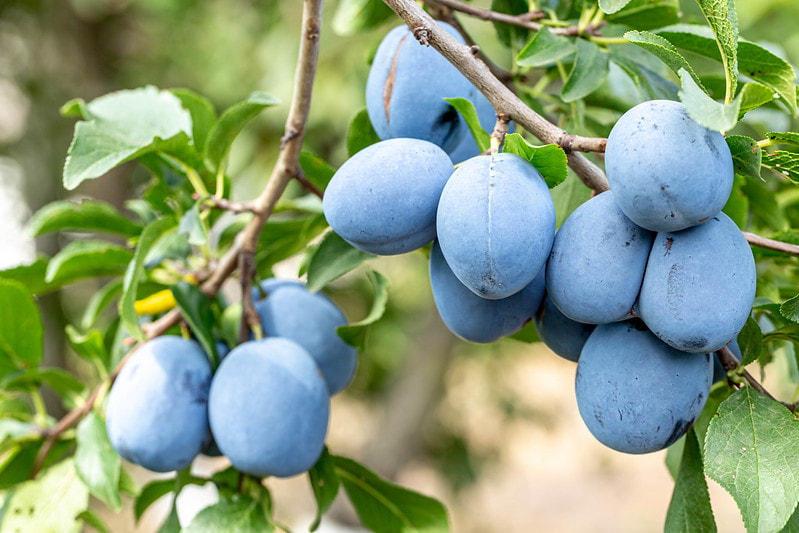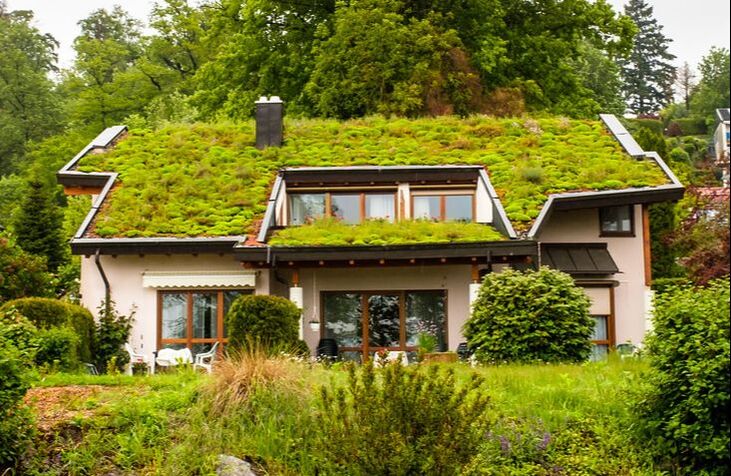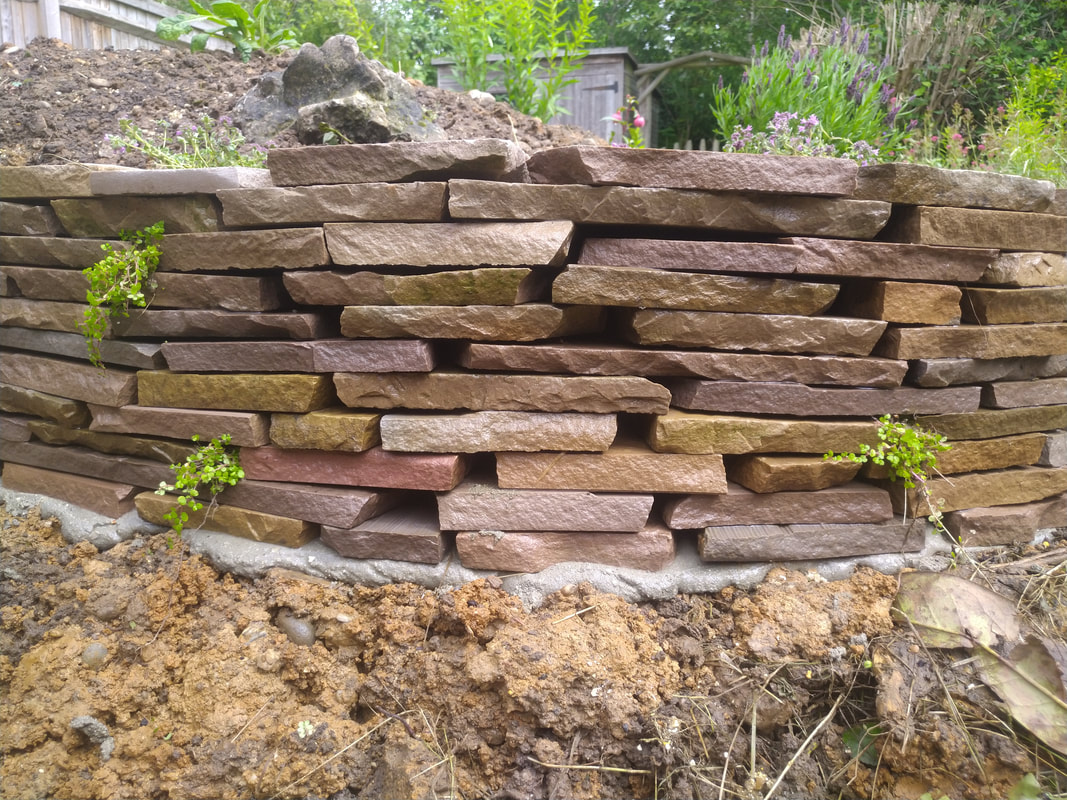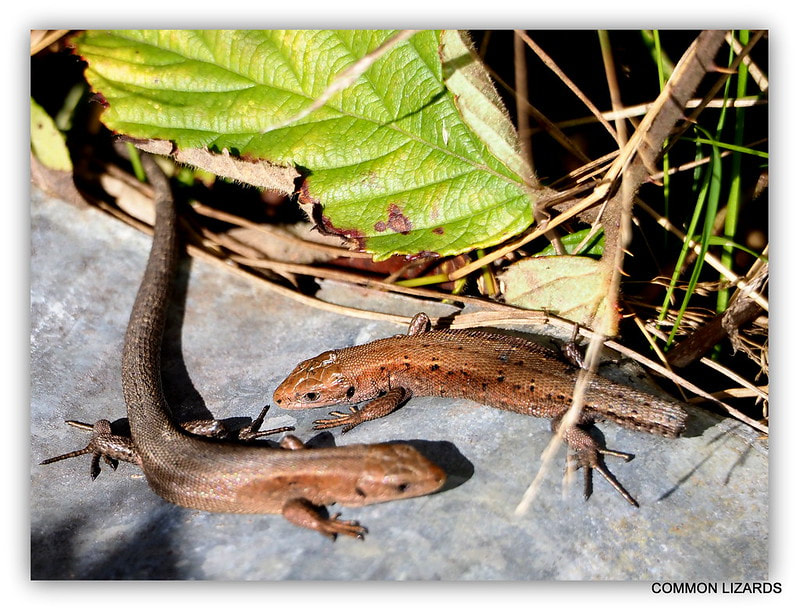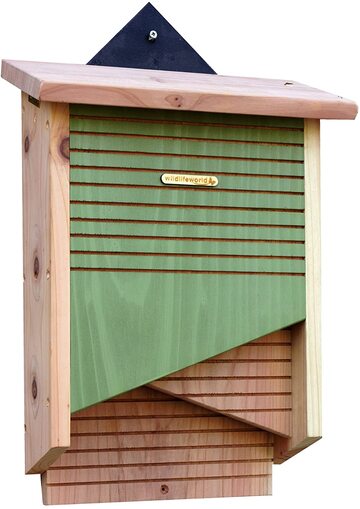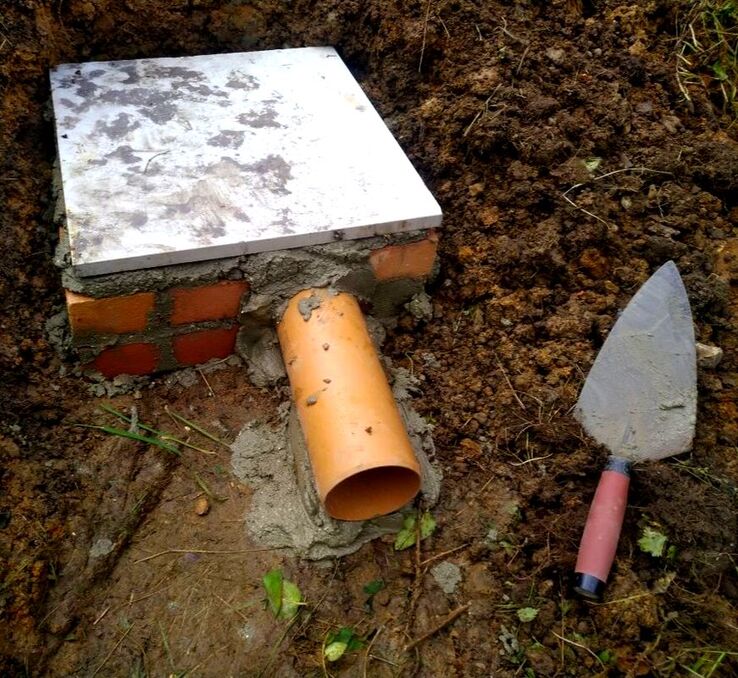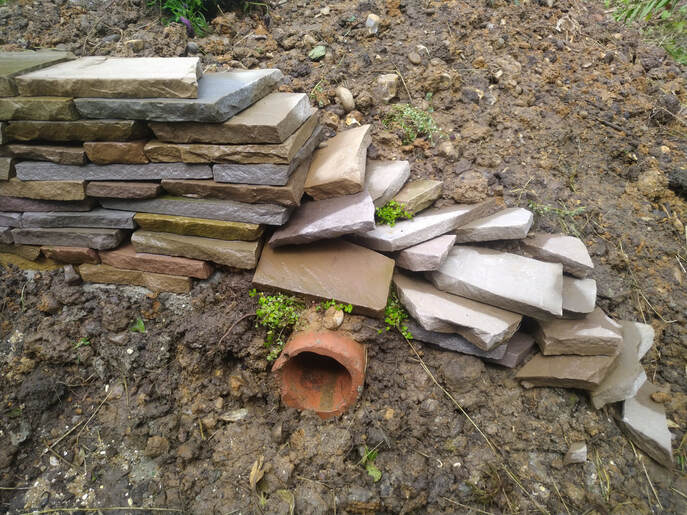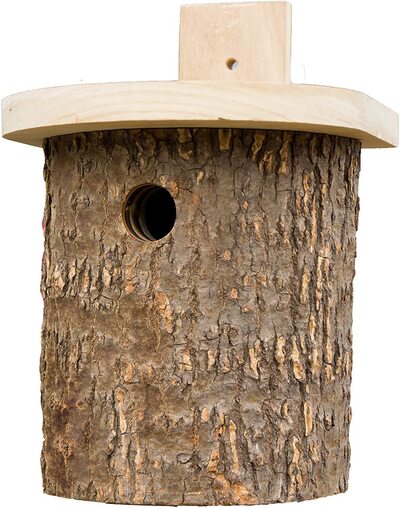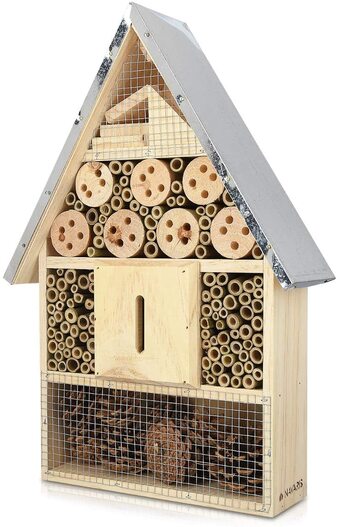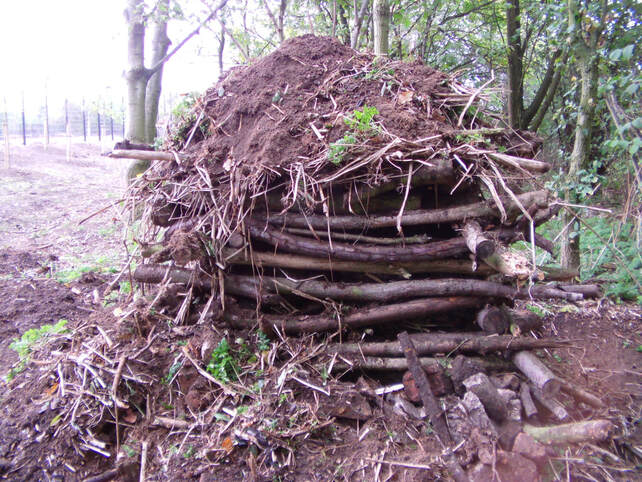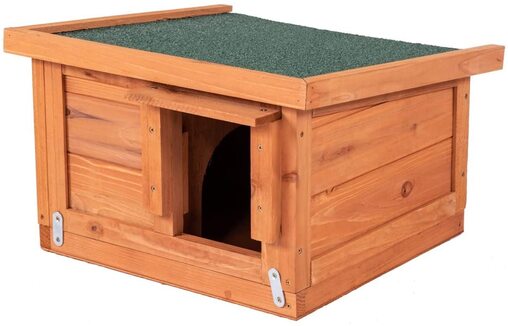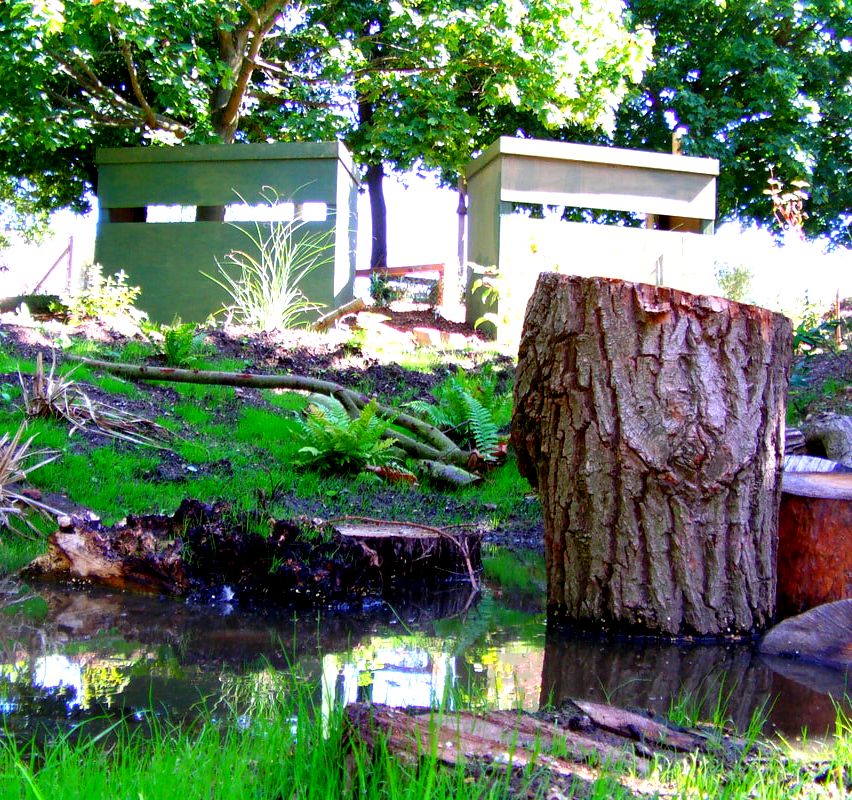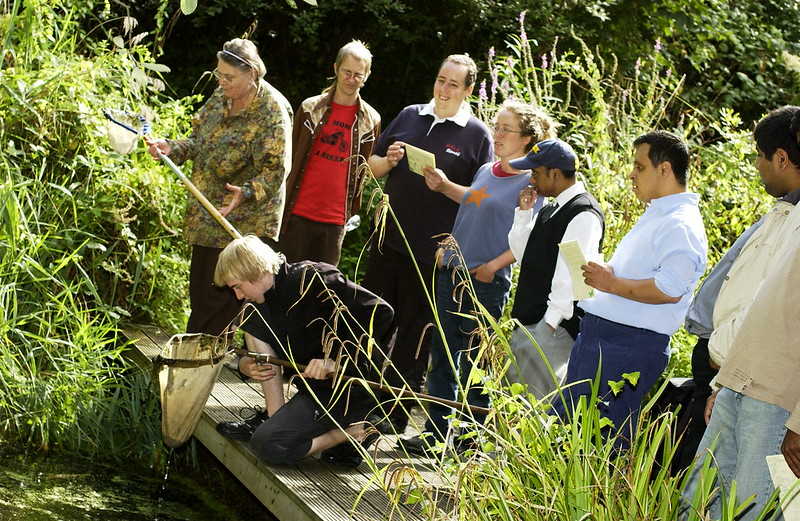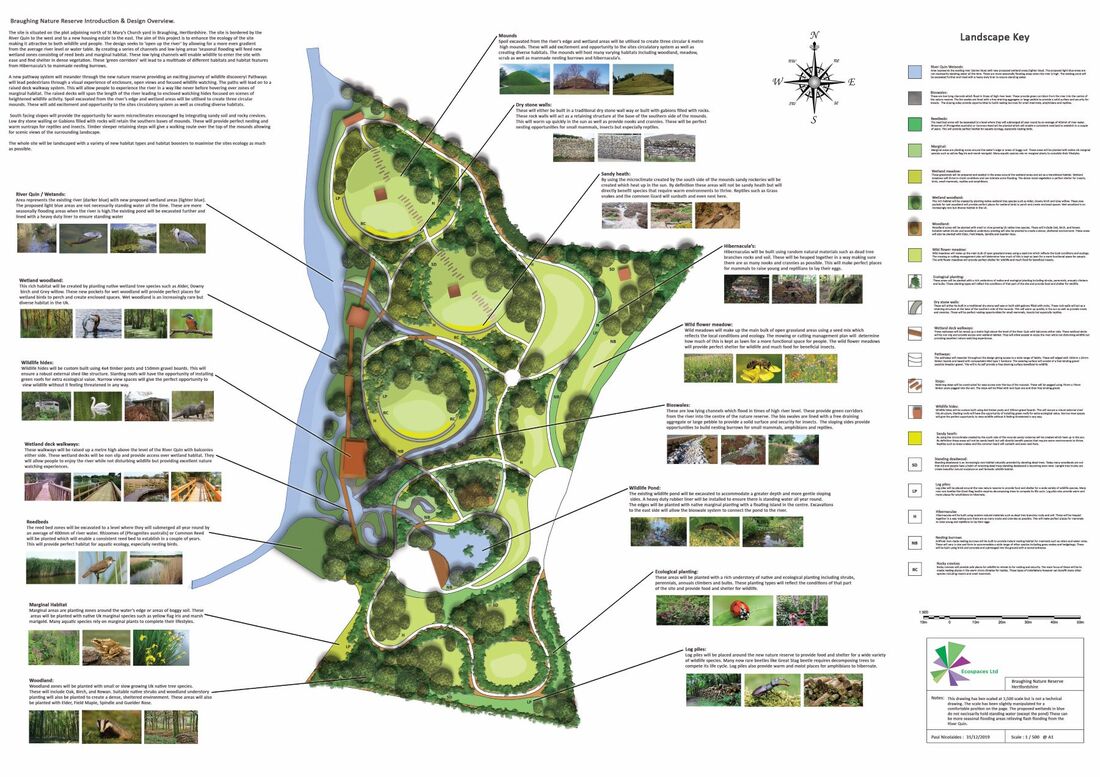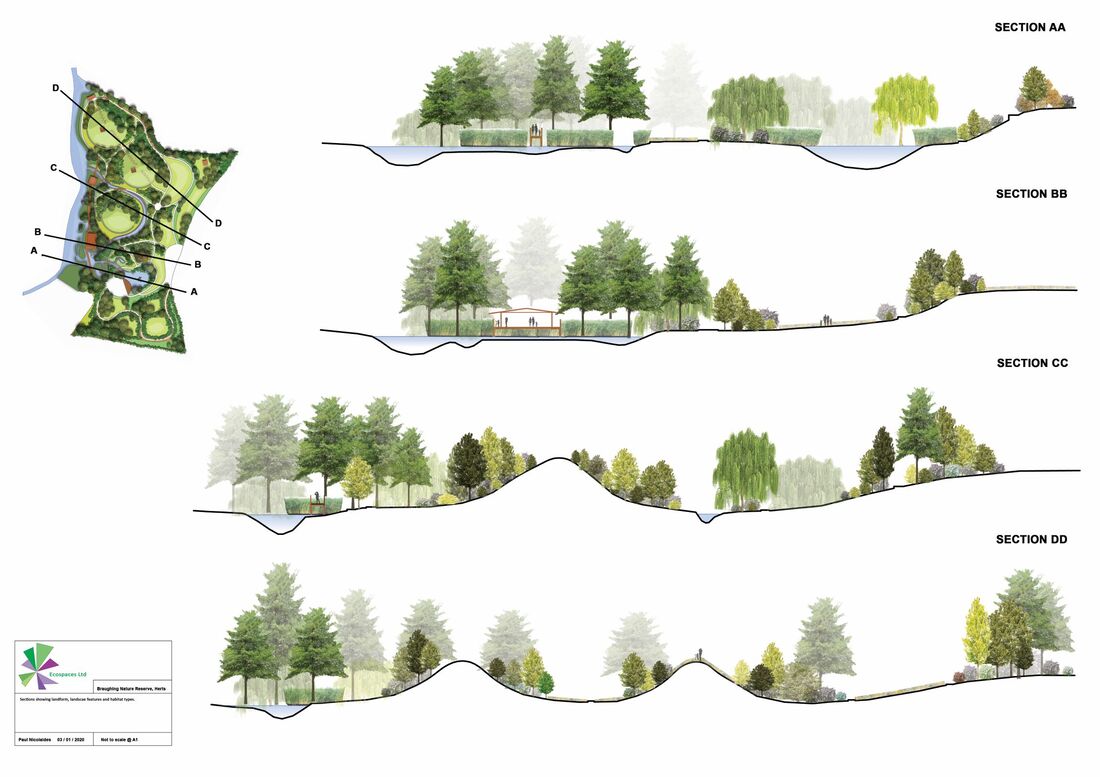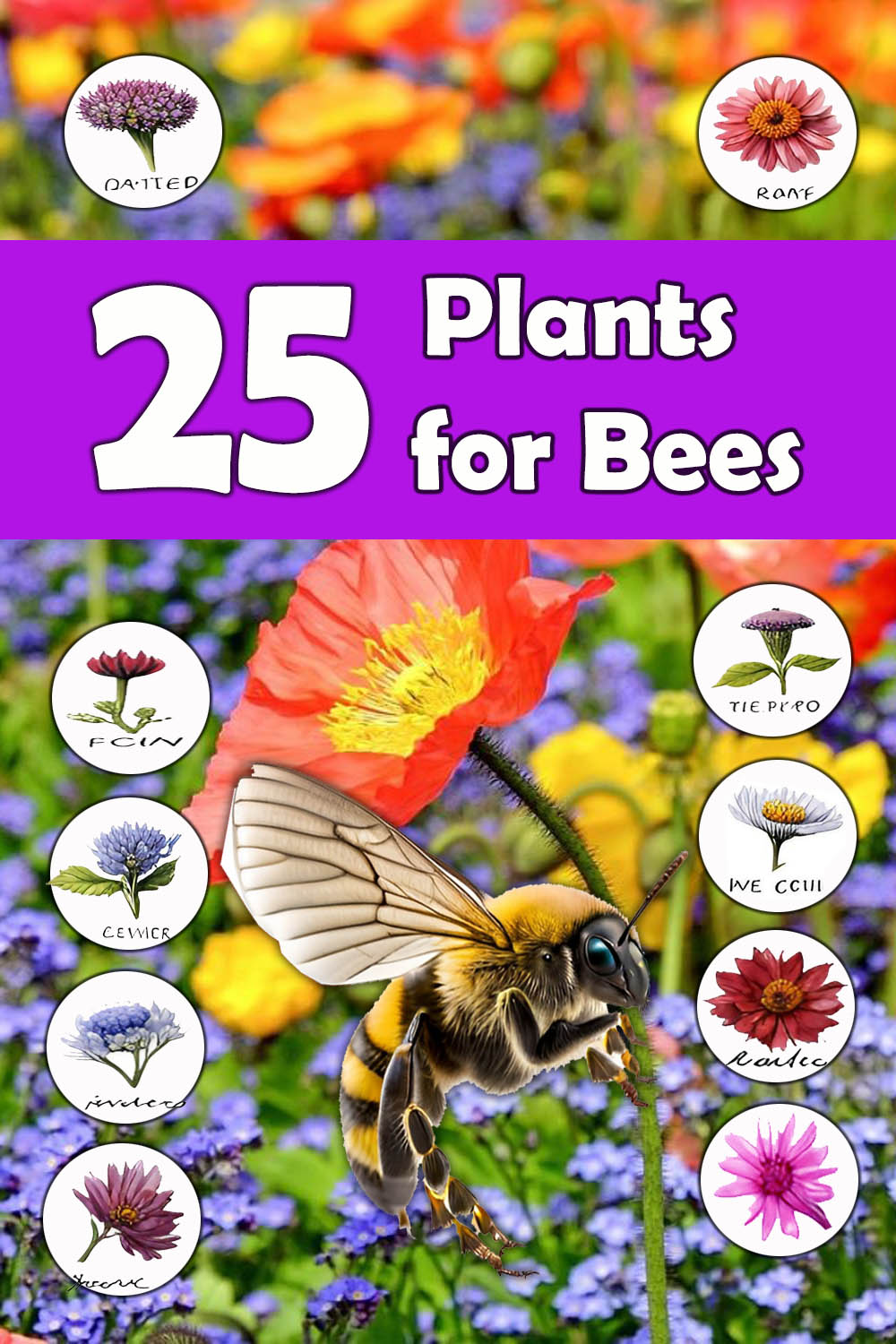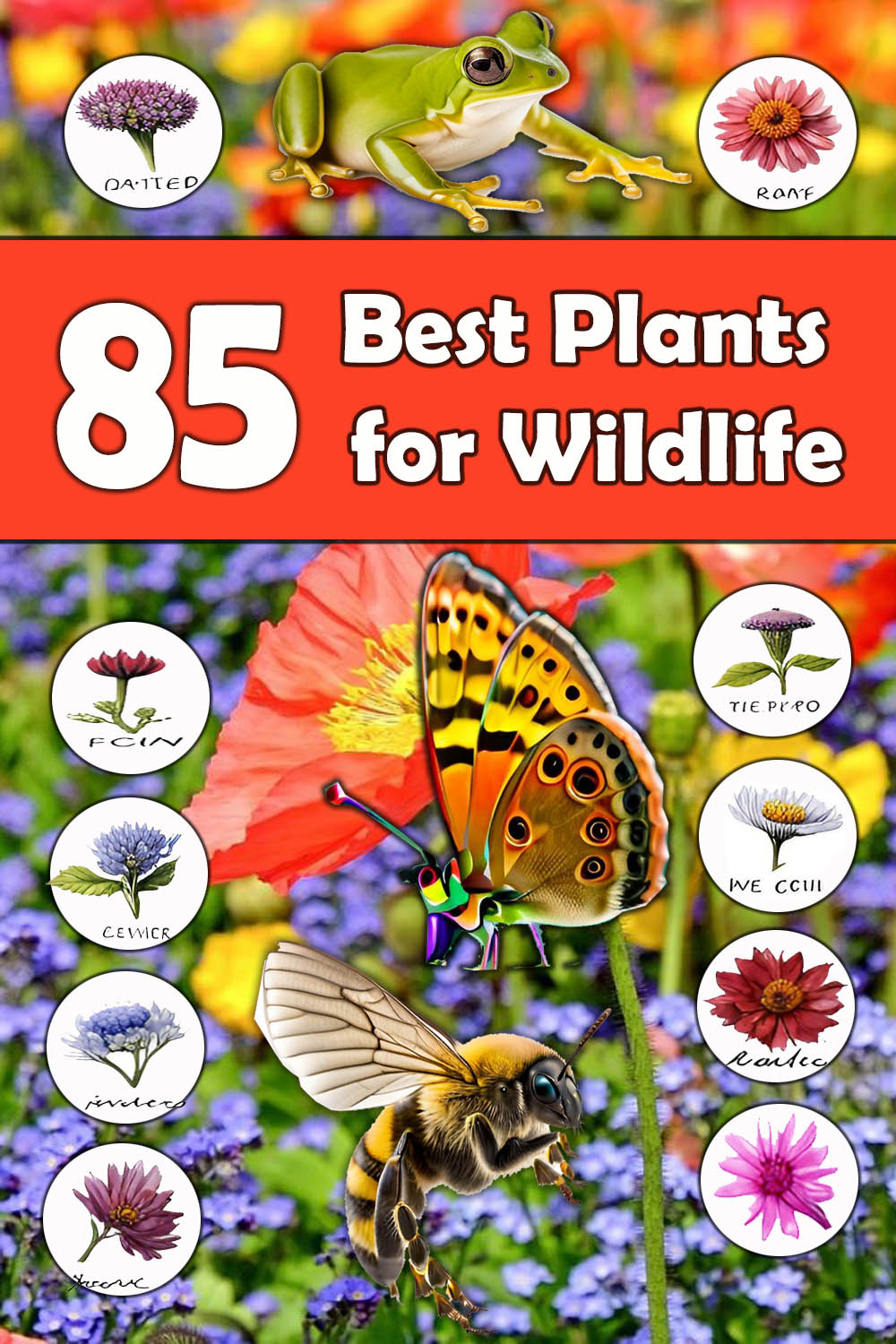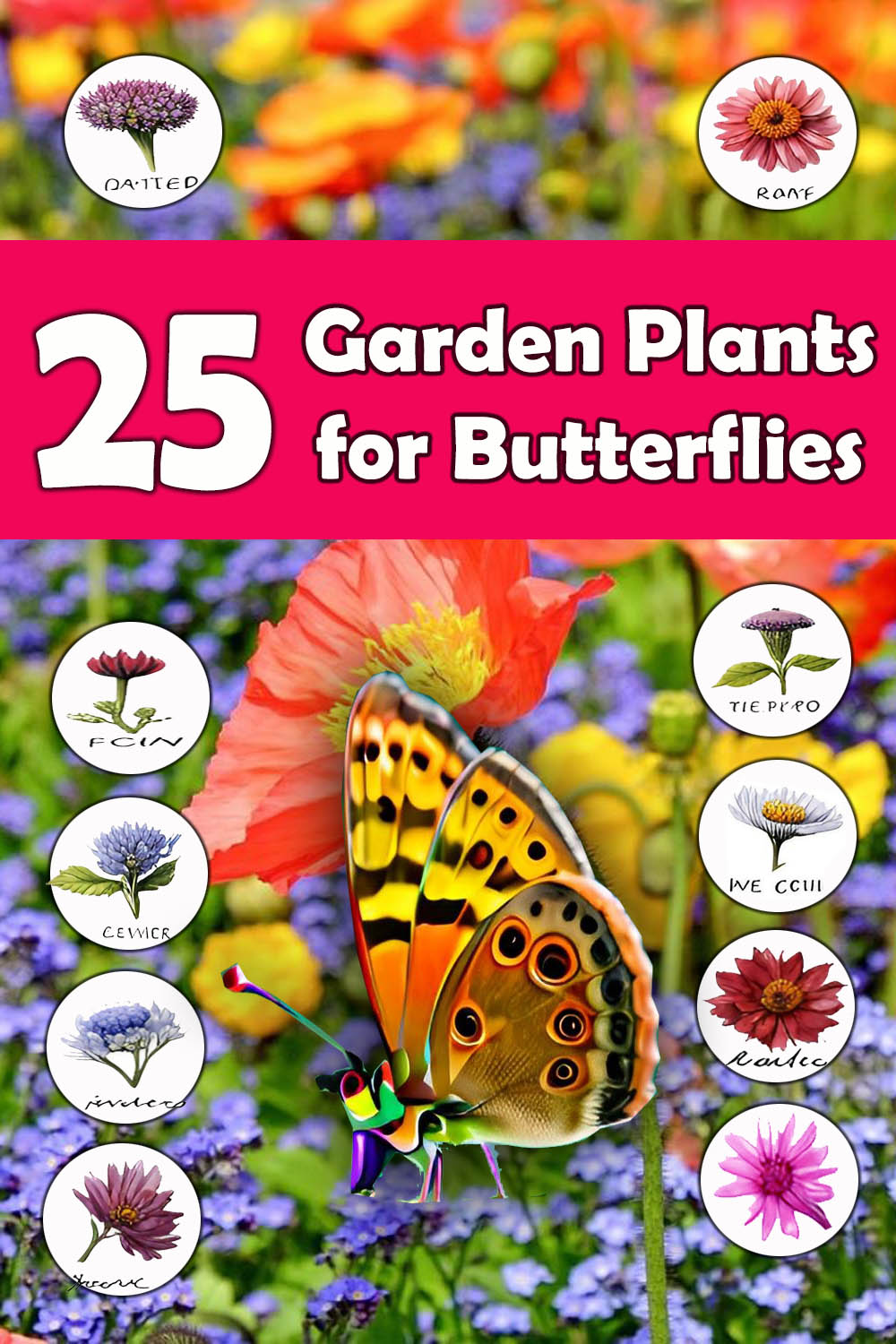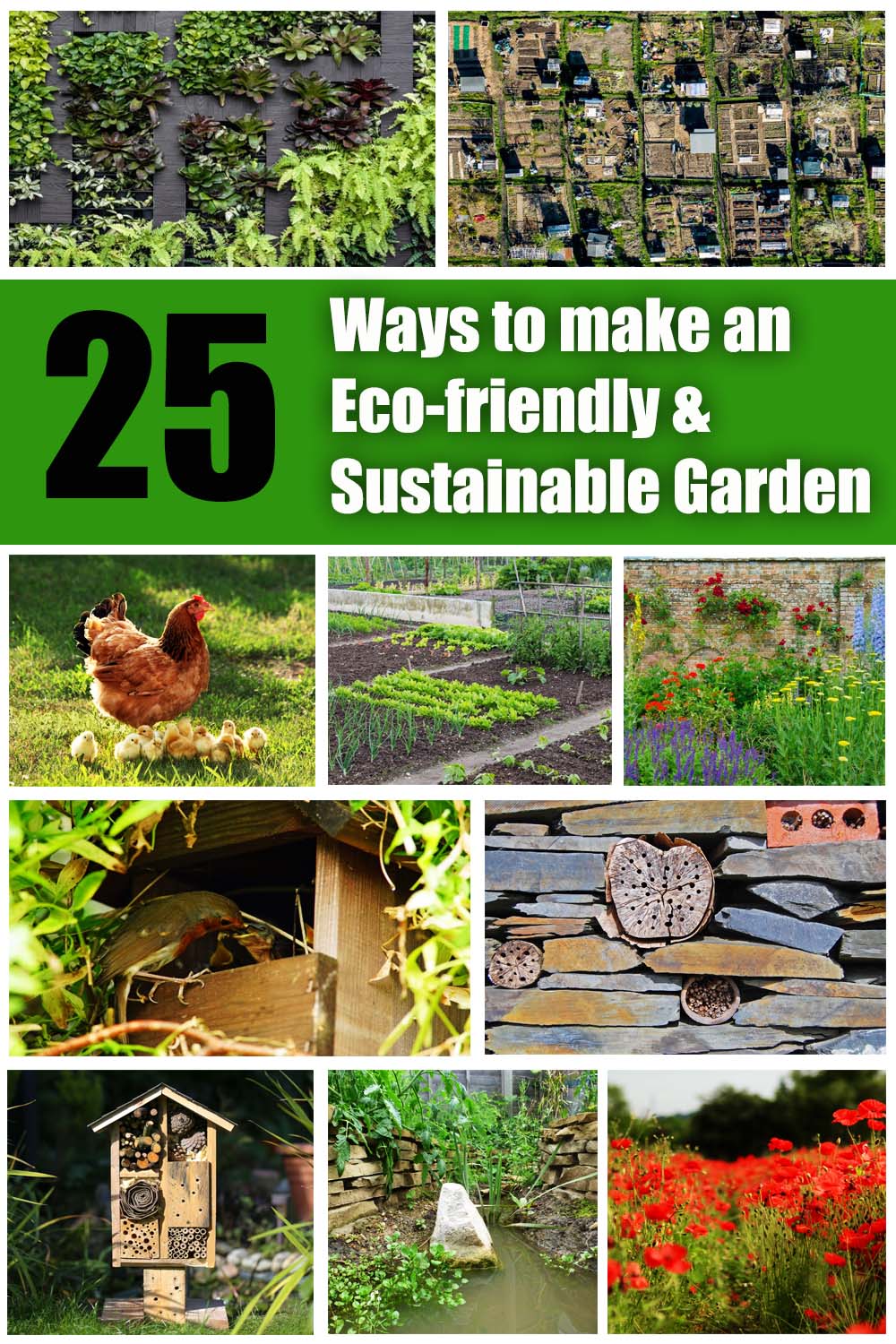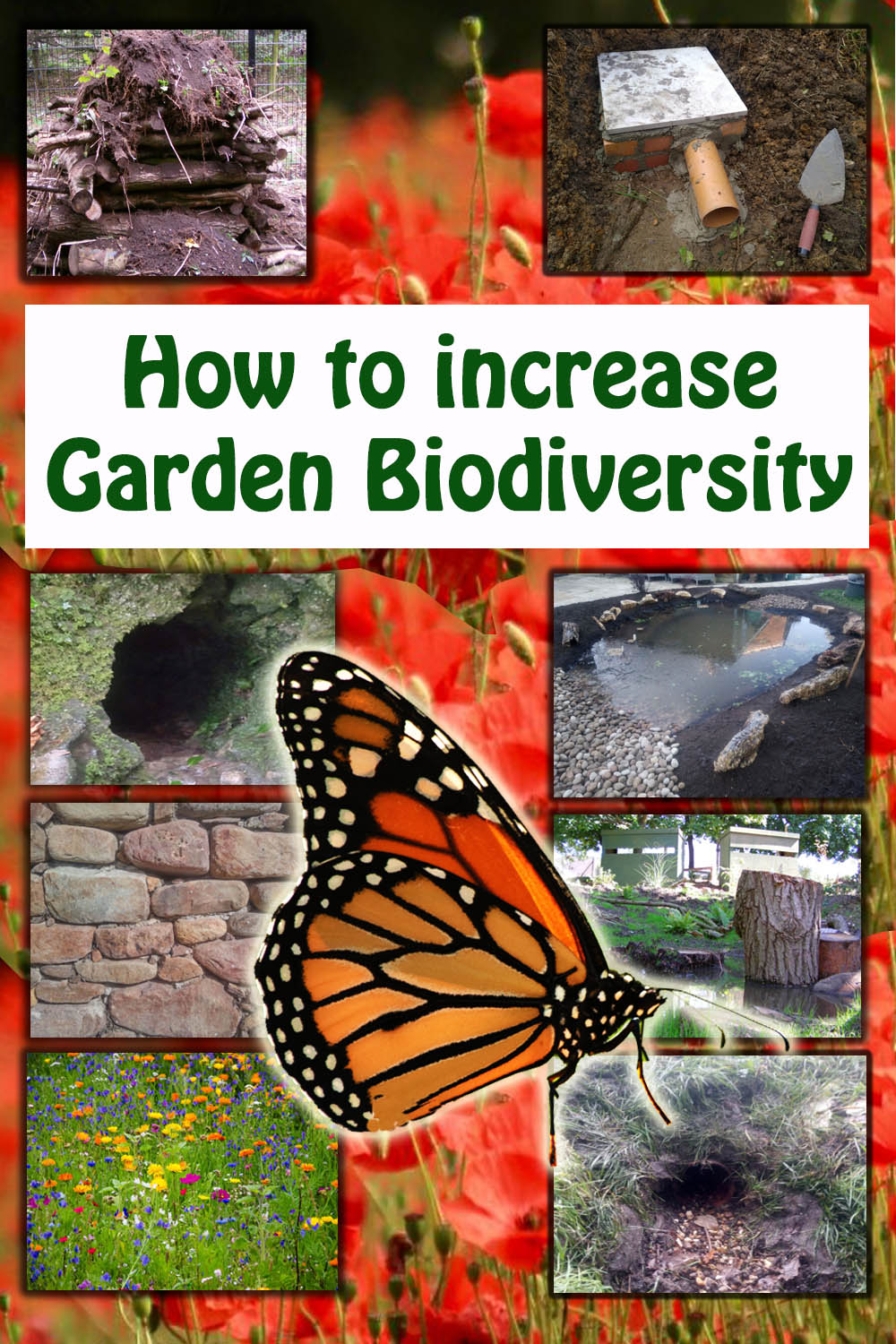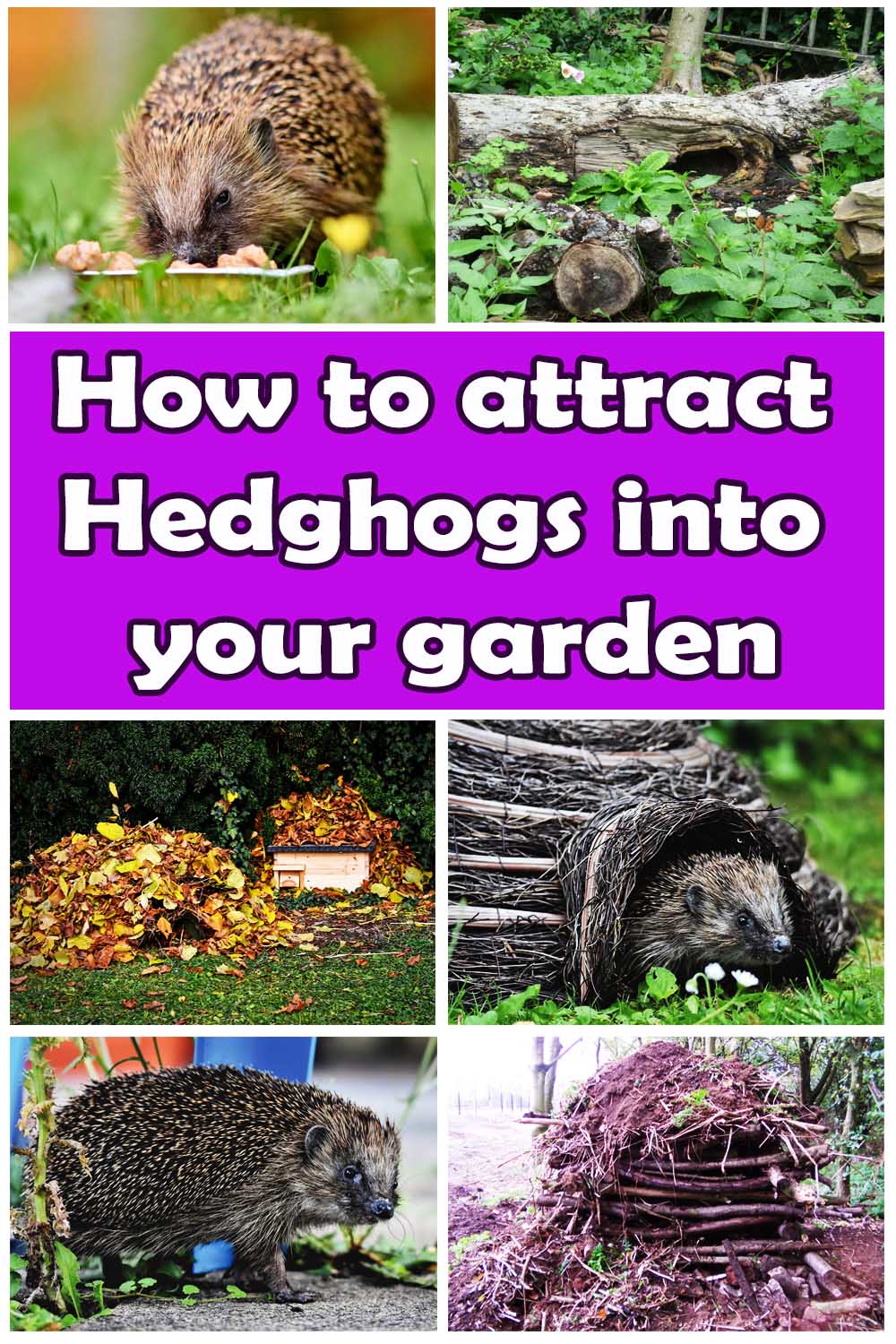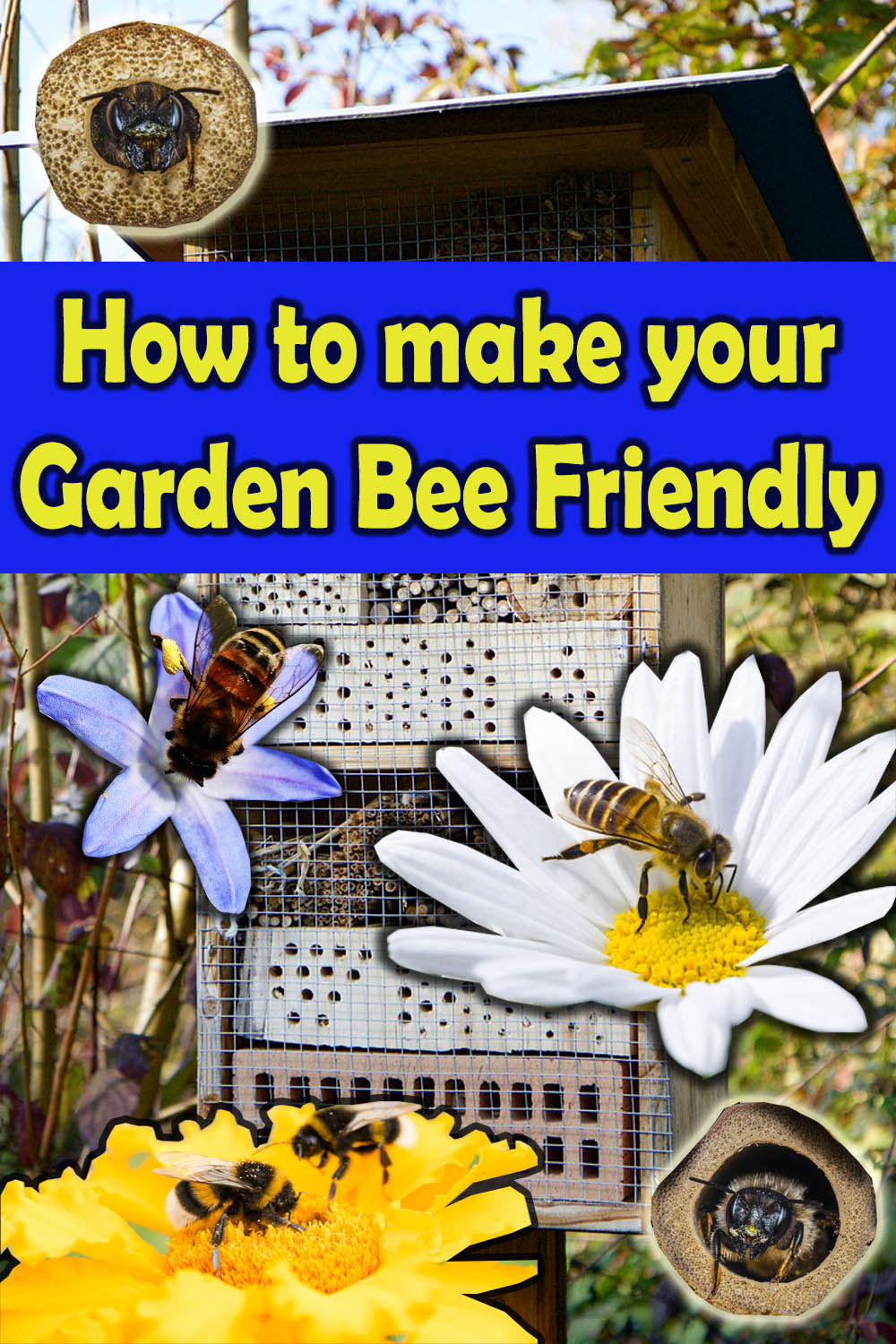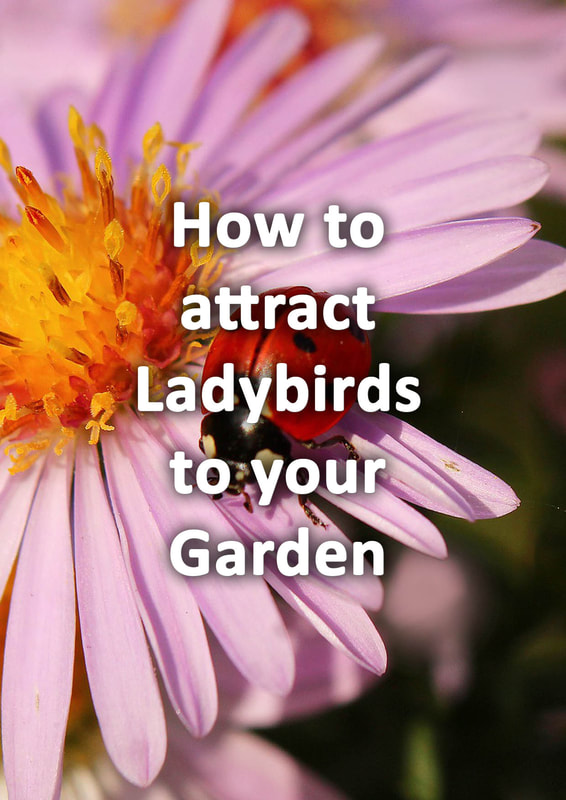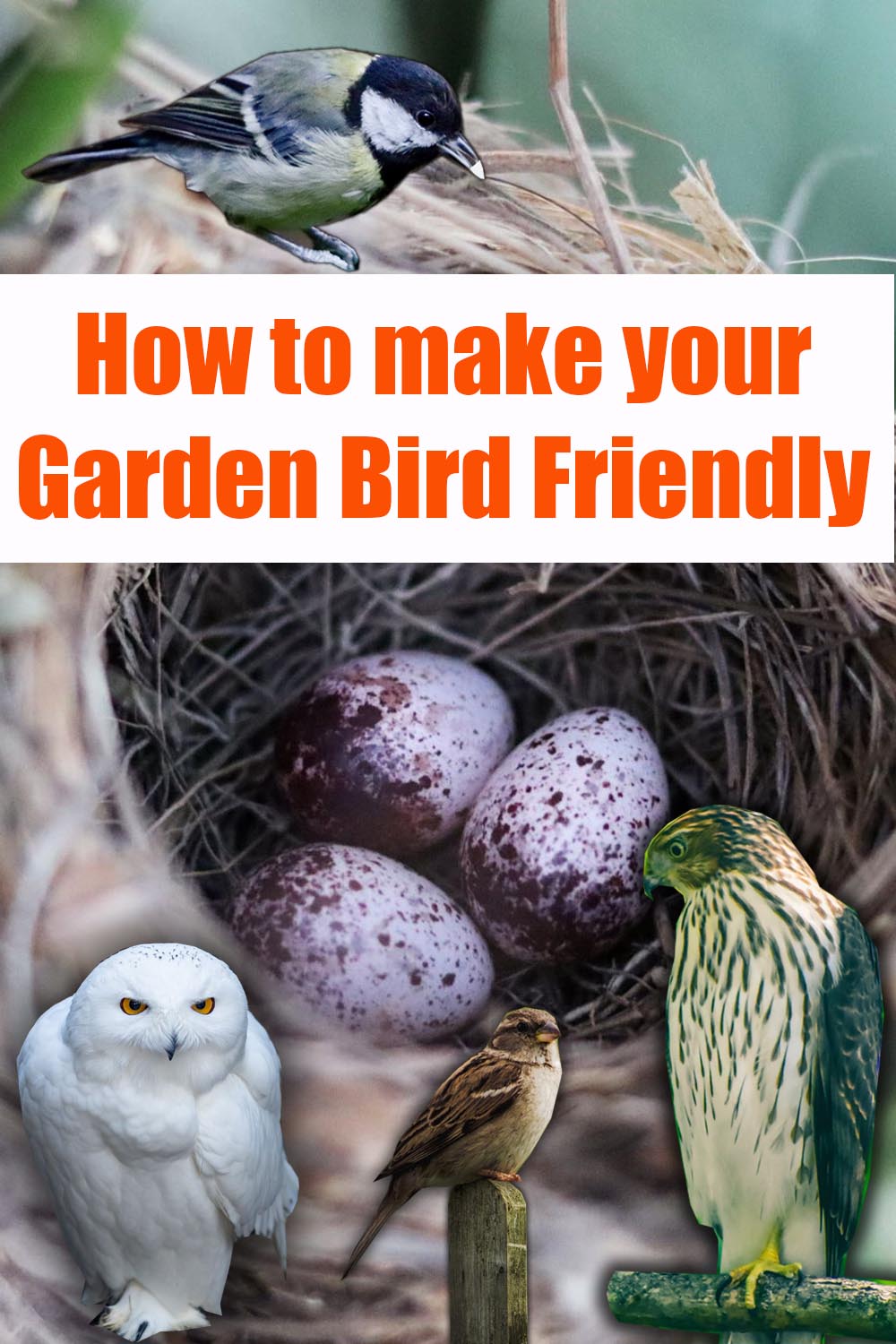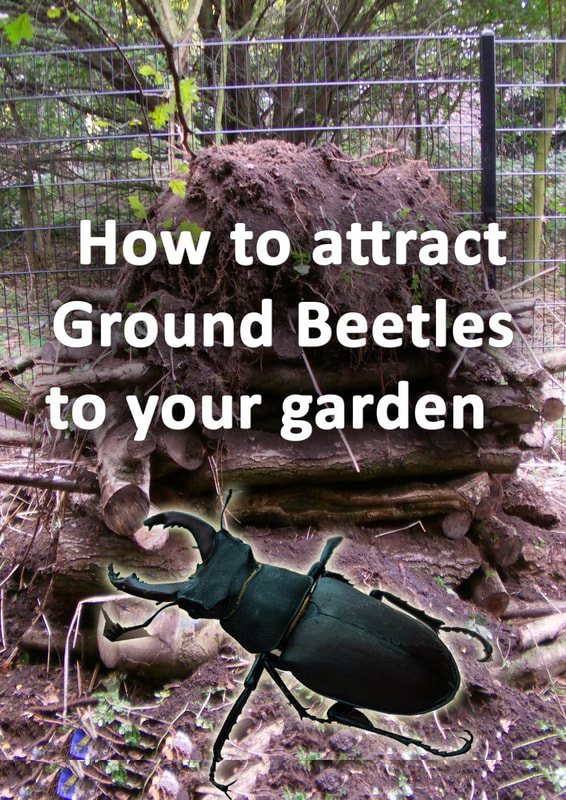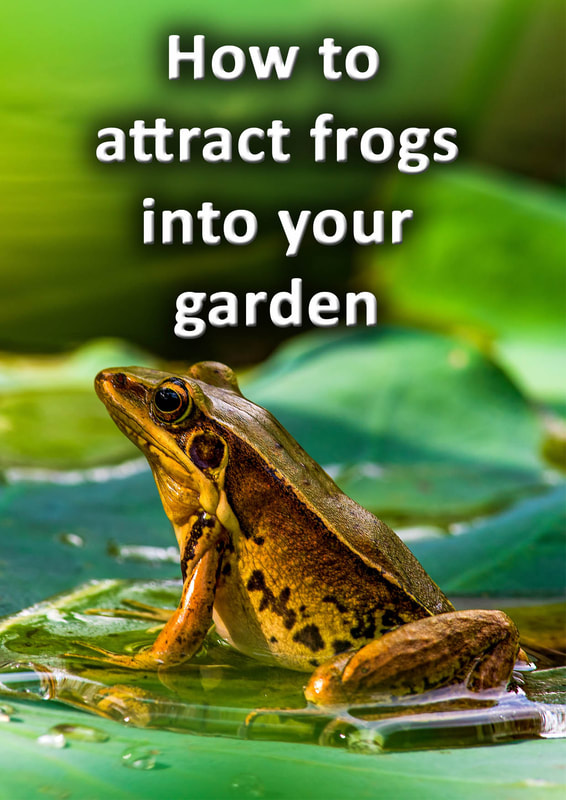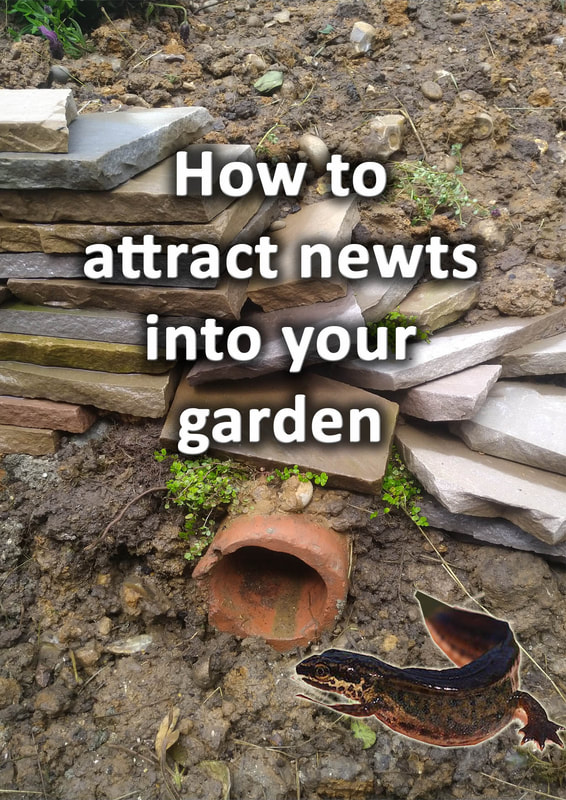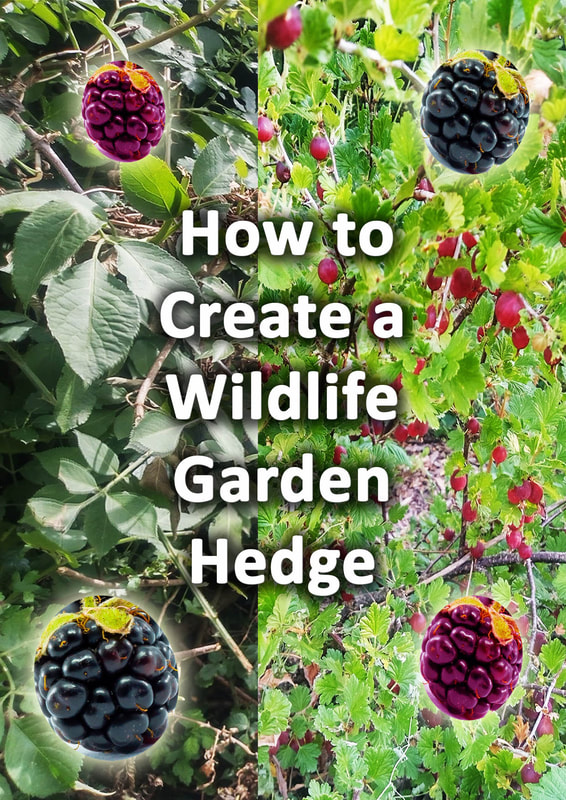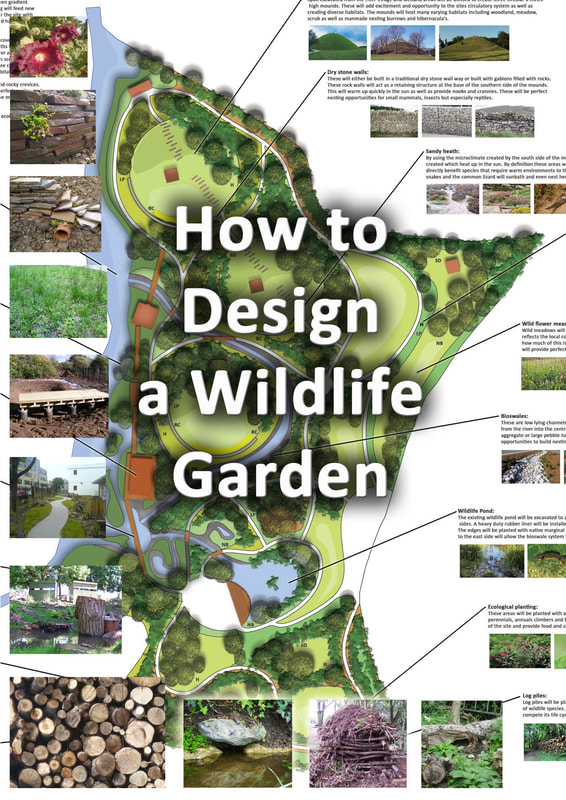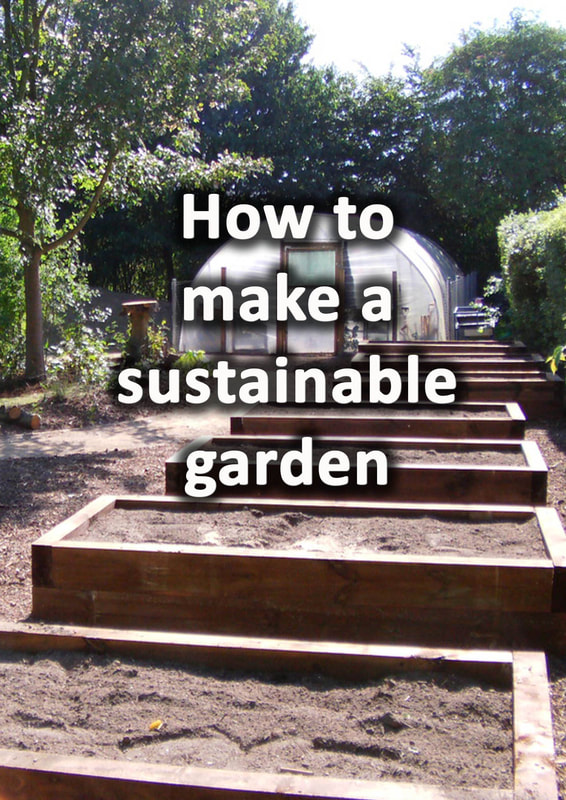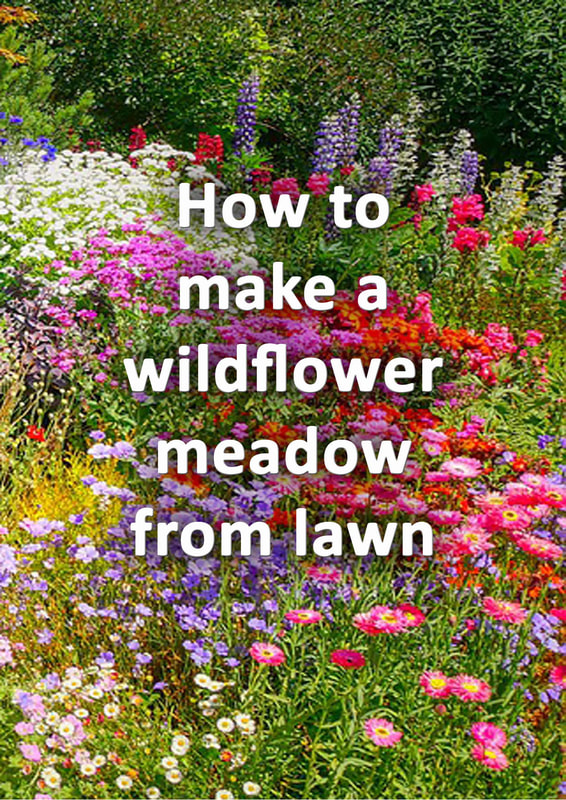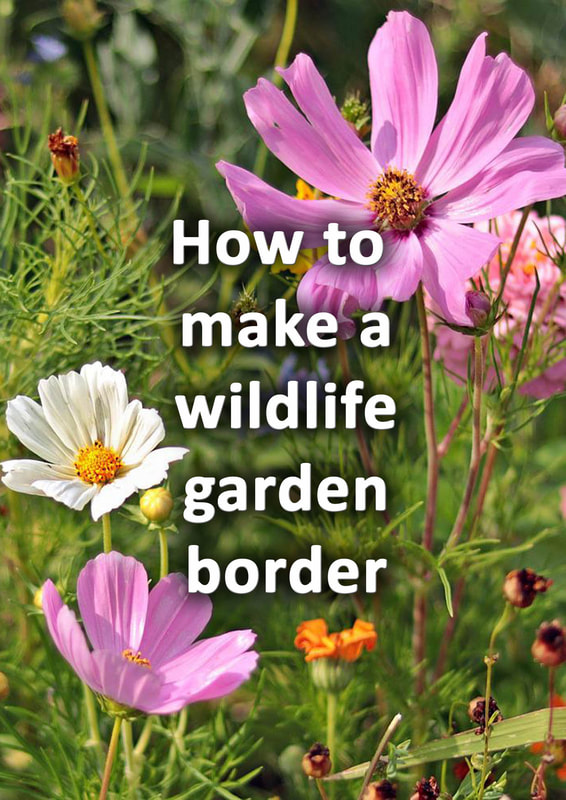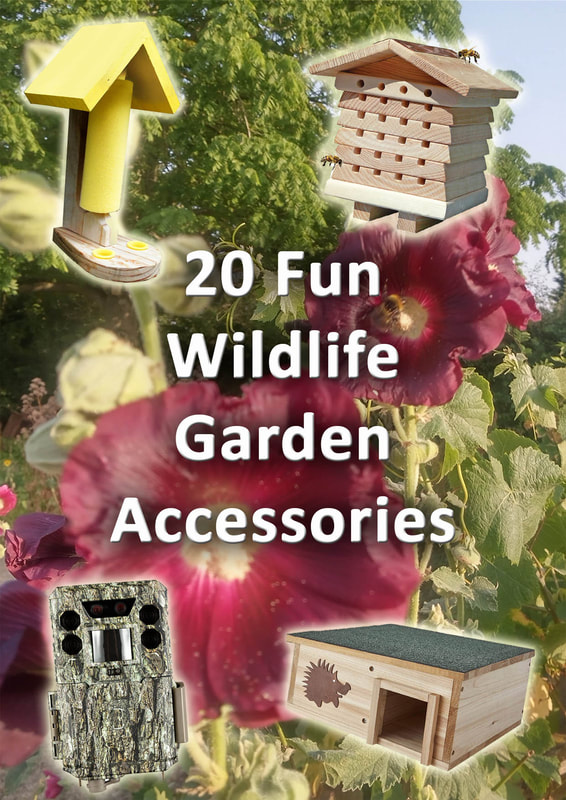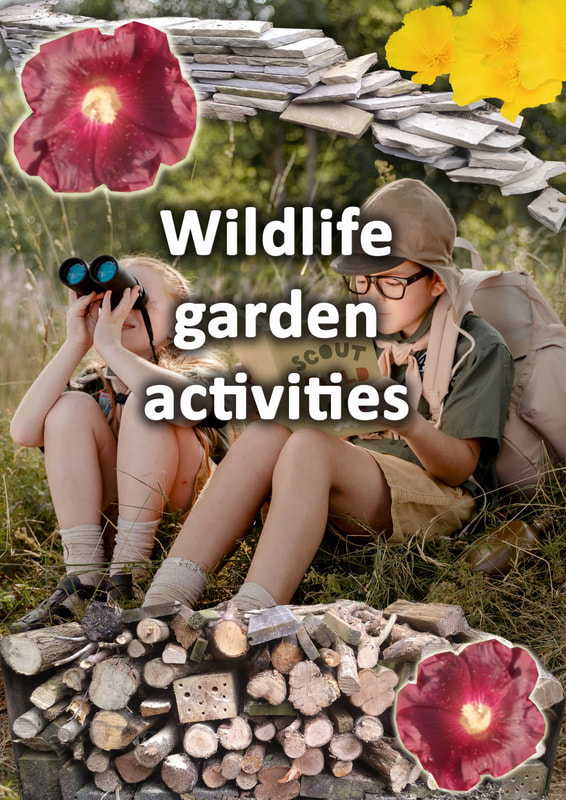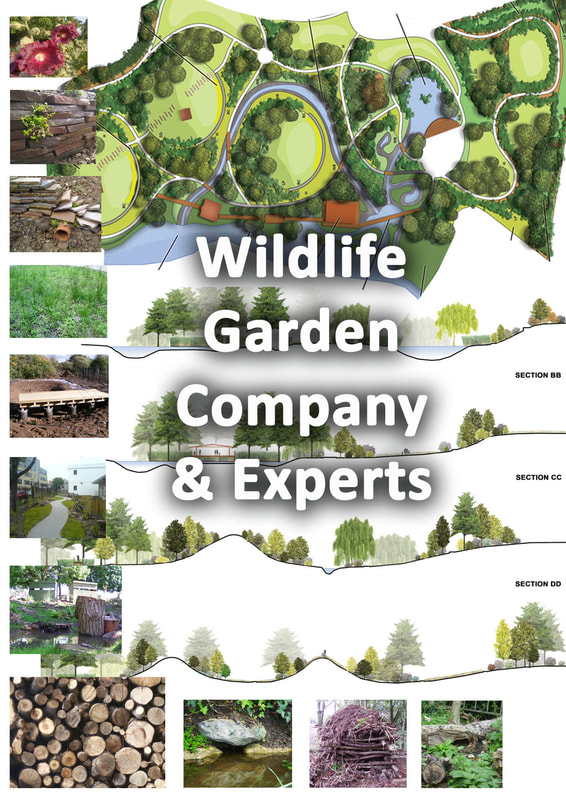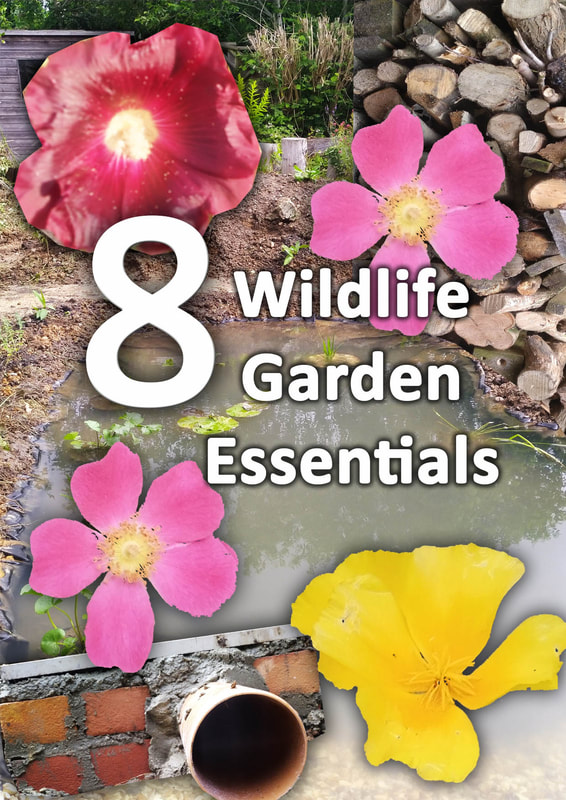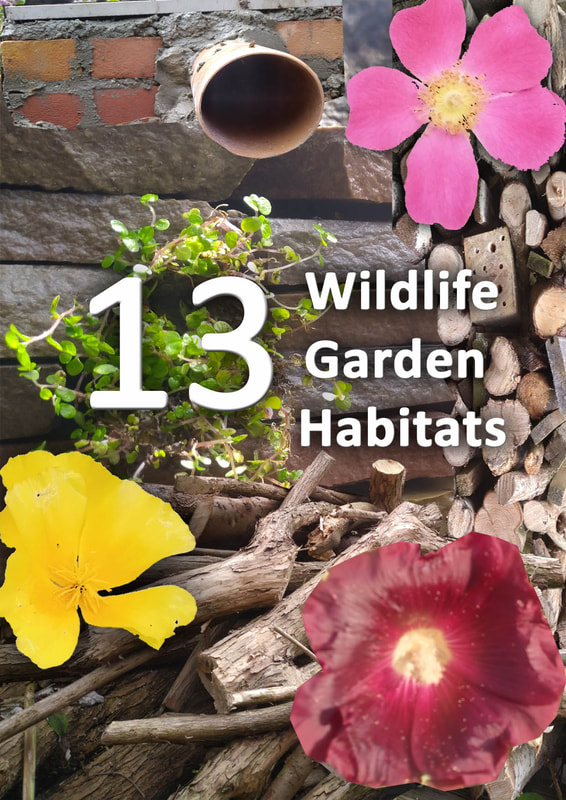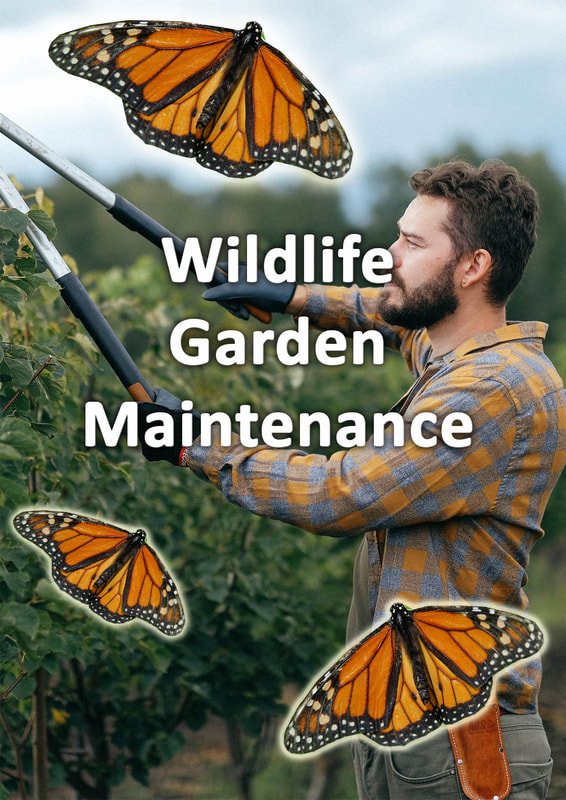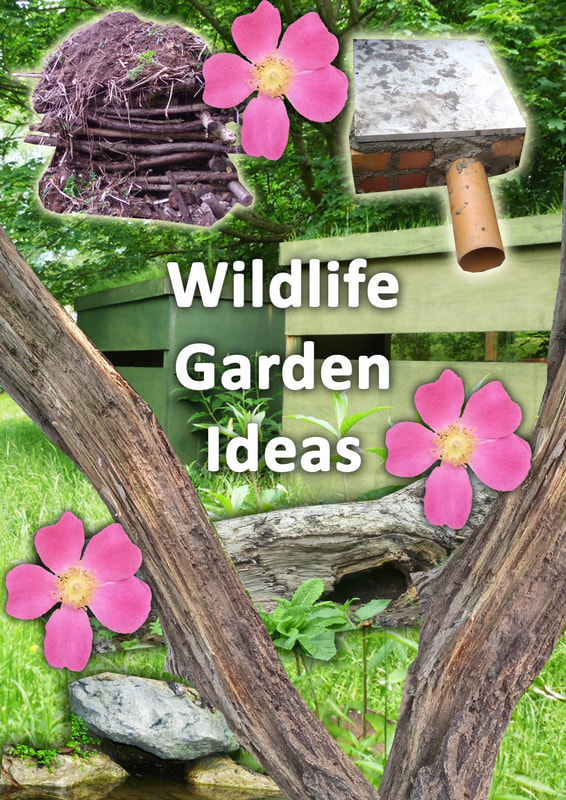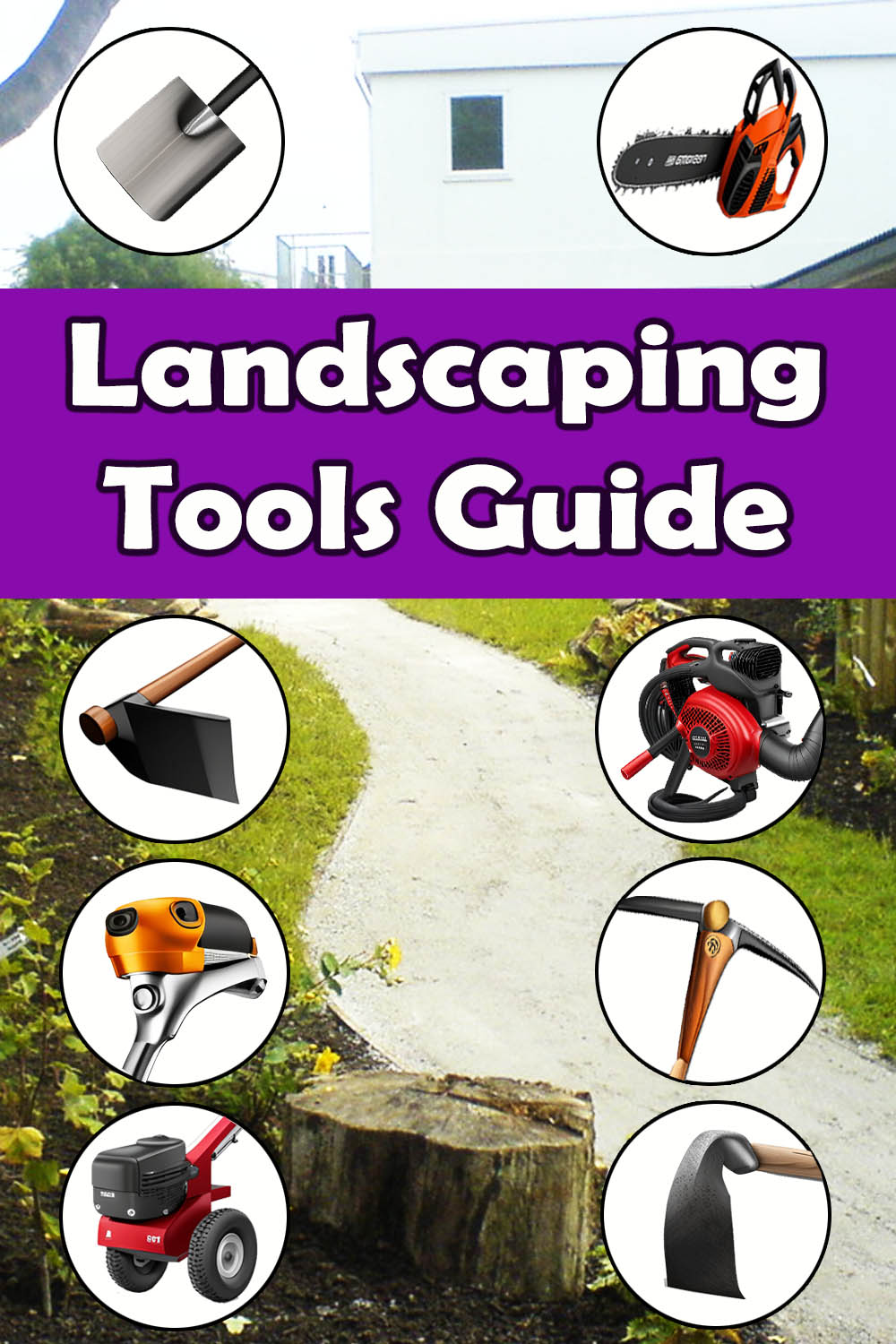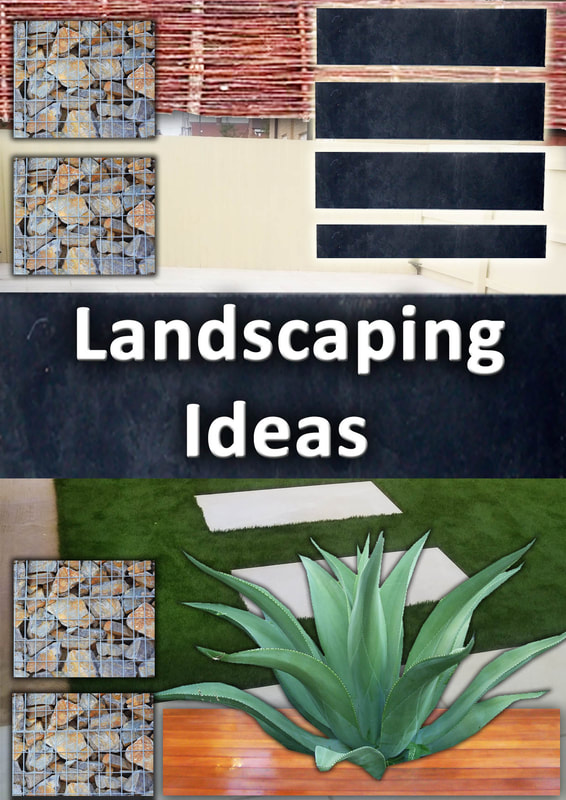|
This article contains affiliate links
If you want to know how to make a wildlife garden you have come to the right place!
In this article I will list and summarise the top 16 things you should do in your garden to attract wildlife. These 16 elements include;
Contrary to common belief, wildlife gardens do not have to be an overgrown mess. Indeed some of the most effective wildlife gardens are those with plenty of diversity. This means gardens with various plant communities and different habitats. and spaces. The very best wildlife gardens are those which are great for both wildlife and people!
By combining natural habitats and good wildlife garden design, the outdoors can become place of natural discovery.
There is simply no better way to experience the sheer wonder of nature than on your back doorstep! In this article I will explain how to make our very own wildlife garden project. Creating a wildlife garden will be one of the most satisfying projects you ever undertake. Why make a wildlife garden?
In the past 100 years people’s lives have changed dramatically. From the industrial revolution onwards we have all flocked to work in towns and cities. Modern machinery and globalisation has changed how we farm and manage the landscape. Two major changes have occurred; Wildlife habitats have declined and people have had less access to nature. This has led to a dramatic number of valuable wildlife species being lost. Not coincidently people have also become less connected to nature.
Continuous studies have demonstrated a link between improved mental health and wild gardens. Quite simply, nature is good for both our mental and physical health.
In today’s ever chaotic and stressful world wildlife gardens enable us to unwind. It has been found that people who live surrounded by plants and animals are generally more fulfilled. Consequently the past 100 year period of human history has some explaining to do! In our predominantly urban existence wildlife gardens are offering that a little injection of spiritual calm. Not only are wildlife gardens good for us they are pretty valuable for wildlife too. In the UK alone private gardens make up more land than all the national nature reserves combined. This means collectively we all have the ability boost national, wildlife habitats.
Private gardens have become a refuge for many wildlife species. An extensive adoption of mechanised agriculture has left most modern landscapes an ecological waste ground.
Therefore with some creativity, enthusiasm and work we all have the power to save and enjoy local wildlife. It is very clear that wildlife gardens are not just good for wildlife, they are also great for us. Wildlife garden design
A wildlife garden should be designed to incorporate various habitats, food, shelter and water. They should incorporate ecological landscaping and habitat creation to support and boost local ecosystems. However, the most successful wildlife garden designs are those where people and wildlife coexist harmoniously. This typically requires spaces with less people frequency in certain zones. Such spaces should be managed with no heavy machinery or significant human disturbance. Designing for people and wildlife
In order for any wildlife garden to be successful it must still serve your family’s needs. If you will be undertaking any hard landscaping work its important the garden is still functional. Therefore you should approach your wildlife garden design like any other spatial remodelling. Firstly fundamental elements such as circulation and usage should be addressed first. The best way to do this is with a SWOT analysis. On a piece of paper draw out 4 separate columns. In each column write the separate headings; Strengths, Weaknesses, Opportunities and Constraints. Now in each column list all existing garden elements and issues which fall under each category. For example if you have a boggy garden you may put that under constraints.
However, the same element may also go under opportunity if you want to create a bog garden. A good view may come under opportunity if you wish to enhance it in some way.
When you have listed your gardens particulars try to think of design solutions for each element. A great way to do this is with precedent images. Do an image search on the internet to find images of gardens you like. Start thinking about how such a design could work in your garden. At this point it is a good idea to draw out a scaled plan of your garden. Using tracing paper start to sketch out ideas, shapes and formats onto the site. Do not worry if you cannot resolve the design in one day, design is a process! Sometimes you may need to leave the process and come back to it later. Eventually you will start to resolve a design which reaches the best outcome for both you and local wildlife. Why not visit our step by step guide on how to design a wildlife garden here. Identifying existing ecologyThe next step in designing your wildlife garden is to identify existing ecology. This could be an existing part of the garden that already has habitat value or potential. For instance, if you have an Oak tree you may want to boost woodland habitats around it. This could be achieved by planting native woodland plants around the trees base. You could also incorporate woodland mulch and log piles to encourage insect life.
Perhaps you already have a low lying part of the garden which floods in winter. If so, you already have a seasonally, flooding, wetland which is a rare habitat!
There are many specialised creatures which thrive in this transitory wetland habitat. You may wish to consider building a wildlife pond or bog garden next to it? It is very typical for some to already have valuable wildlife habitat present without even knowing. If you want to learn more about identifying specific habitats I recommend the Phase 1 Habitat Survey Handbook.
In the mean time do some detective work and have a close look around your garden. Look for the tell tale signs of wildlife; look under pots or in cluttered areas.
Is there burrowing under fences? If so this could be a sign of a visiting hedgehog. Do you have depressed lines in your lawn where animals have been walking? Why not install a digital wildlife camera for a few weeks to see what is moving around at night? This will provide you with a wider understanding of what wildlife you already have present. Going through this process will also give you insights on how existing habitats could be enhanced. If you see a hedgehog is cutting across you garden perhaps you could encourage it to stay? You could build a hibernation quarters or nesting burrow for it to raise young? Green corridors
When it comes to designing wildlife gardens you must remember your garden is not an island. It is very likely that wildlife in your garden will travel across many other gardens. Therefore, it is always beneficial to create travel openings to your boundaries. This could be a small hole at the bottom of your fence for creatures to past through. Try to identify the part of your garden boundary with the highest ecological value. For example, if your garden backs onto a stream try to create familiar habitat next to it. In such an example you could create a wildlife pond next to the boundary. This would allow wetland species to connect to the surrounding landscape.
When deciding what habitats to encourage, think about what would naturally occur in your area. Do you have any information on the natural history of the area? Before your home was built was it a wetland, forest, or meadow?
Sometimes it is good to look at satellite images of your locality such as ‘Google Earth’. See if you can identify green corridors within the landscape and where they travel. Try to view your garden within the greater landscape and ecological food web. Even if this exercise seems more symbolic than practical it is worth undertaking. Understanding the surrounding landscape can provide a valuable insight into local ecology. This process will help you make better design decisions on the type of habitats you create. Wildlife buffers
Wildlife garden designers may wish nature to feel secure around people but in reality this is not always the case. Wildlife has a healthy fear of people and our nosy machines which roar loudly and potentially harm. Consequently, when designing nature gardens, wildlife buffers should be implemented into the design. Wildlife buffers are areas which are exclusively set aside for wildlife. These can be accessed for special wildlife study and habitat maintenance duties. This gives wildlife the extra security it needs to seek permanent residence in your garden. Such buffers can encourage a greater trust between you and your resident wildlife. If designed well, buffers can stage some of the most intimate wildlife encounters. For instance, a wildlife pond can be fenced off with a picket fence and a locked gate.
At the same time a raised deck can provide a commanding and intimate view of a pond or wetland area. This can lead to great encounters of birds bathing, mammals drinking and amphibians spawning.
Such buffers can be designed in a range of ingenious ways to maximise wildlife watching encounters. Such encounters can also be encouraged by building wildlife watching dens and screen hides. The aim of wildlife buffers is not to directly separate people from wildlife. They are used as a tool to provide wildlife security while developing a mutual trust. If well executed, buffers can lead to exciting encounters with more elusive wildlife garden species. Garden habitat creation
Effective wildlife garden design will attempt to recreate viable wildlife habitats. This is not always easy as most natural habitats have been formed by nature over time However it is possible to create natural habitats with ecological landscaping. This involves building the best possible landscape for wildlife and waiting for colonisation. Some great examples of garden, habitat, creation includes ponds, meadows, and woodland gardens. Such examples of wildlife garden habitats and habitat boosters will be explained below. Wildlife garden plants
Garden plants are an important consideration for a successful wildlife garden design. Conventional gardens select plants more on their visual qualities than wildlife value. However in wildlife gardens, plants are recognised more as a part of an ecosystem. Plants will essentially provide food for pollinators and small herbivores within the food chain. Therefore there is typically an emphasis on including plants which are native to the area. Such plants will have the highest chance of supporting native wildlife species within your locality. Why not visit our article on the best plants for wildlife gardens here.
Furthermore, plants acclimatised to local conditions will require less human intervention and care. As well as native planting, ecological planting can also be incorporated into habitats.
Ecological plants are those which provide food and shelter for wildlife but are not native. Wildlife garden planting is an extensive subject including many planting types and species. Consequently we have created a separatearticle explaining the 85 best plants for wildlife gardens here. 16 elements of a successful wildlife garden1. Wildlife Garden ponds
If there is one thing you can do to encourage wildlife to your garden its building a wildlife pond. Water is the most important element for hosting life in any environment. Not only do ponds and wetlands provide water to drink they also allow birds to bathe. Bathing is extremely important for wild birds to keep their feathers in perfect condition.
Wildlife ponds can also sustain whole ecosystems underneath the water’s surface. Many wildlife species complete some of their lifecycles in the depths and shallows
This is true for amphibians such as frogs and some insects such as dragon flies. When you first create a wildlife pond it is incredible just how fast aquatic species will colonise it. Read our article on the best plants for a wildlife pond and how much a wildlife garden costs here. 2. Wildflower meadows
Wildflower meadows were once common across the landscape for many centuries. Wild meadows were a rich tapestry of wildflowers and grasses traditionally harvested once a year. Historically the hay of such meadows was collected and used to feed livestock during the winter months. However modern, mechanised, agriculture eliminated the need for meadow harvesting about 70 years ago.
This led to a catastrophic decline in wildflowers and the millions of species which relied upon them. Many species of insects, reptiles, birds and small mammals fed and sheltered within the dense grasslands.
Wildflower meadows are extremely rich habitats and easy to create in gardens. Why not read our article on how to create a wildflower meadow from existing lawn here. Alternatively visit our article on how to lay wildflower meadow turf here. 3. Deadwood habitats
Dead and dying wood was once a common habitat across our woodlands and countryside. In a natural woodland dead trees litter the forest floor and canopy. However many woodlands particularly in Britain were originally plantations. This becomes obvious when noticing most trees present are all of a similar age and height. Today we have an emphasis on trying to keep the countryside too tidy. Safety paranoia has also led to an assault on standing, dead trees which is a rare and important habitat.
The Bialowieza forest in Poland is a great example of a deciduous forest which has never been cut down.
The forest is littered with dead and half fallen trees everywhere! The forest floor has a thick layer of breaking down wood which mulches the forest floor. Before the age of agriculture most landscapes were woodland. Therefore implementing dead wood habitats into a wildlife garden is very favourable. Buried deadwoodBurying old logs can be a great way to kick start soil and dead wood ecosystems. In such projects, It is best to bury native, deciduous, tree logs. Buried logs will provide the perfect habitat for the European stag beetle which is becoming an ever rarer insect. The larvae of this beetle will spend up to 7 years feeding on rotten wood. Log pilesOne of the fastest ways to incorporate dead wood into your wildlife garden is with log piles. Log piles can create hiding places for multiple species and will slowly decompose over time. This process directly feeds the species which feed on rotting trees. Log piles can also be arranged vertically in a firewood stack formation and then covered with soil. Standing deadwood
Standing deadwood is a very important habitat to a number of specialised, species. Such a habitat was once common in most forests across the planet. However, the now typical plantation woodlands have led to standing deadwood becoming a rarity. Large linear tree logs can be set deeply into the soil to create standing deadwood posts. These can become decorative landscape installations within wildlife garden designs. Make sure you drill some holes on these high up on the south side of the standing logs. This helps to provide shelter and nesting opportunities for numerous insects and invertebrates.
This is especially the case for for solitary wasps and bees, make the holes between 2 and 10 millimetres in diameter.
Deadwood is typically much undervalued when it comes to designing a wildlife garden. However such habitats are some of the most important for wildlife. Deadwood over time helps to evolve rich soil ecosystems. This process invigorates the lower part of the gardens ecosystem and food web. 4. Soil ecologyMost people are completely unaware that topsoil is a living organism. Soil is made up of billions of eroded rock particles, decomposed organic matter, bacteria, fungi and invertebrate life. Soil is responsible for the pretty much all animal life we see above the ocean. This amazing substance is a complex web of bacteria, fungi, and other microorganisms. This 'soil ecology' is what forms the very base of every land based food web. However, many soil ecosystems today are terribly under threat mainly from agriculture. Most farmland produces crops by feeding the soil with chemical fertilisers. This is leading to soil degradation where complex soil ecosystems slowly die.
Such soil ecology has taken millions of years to evolve and is very important to all life. This is no less the case within wildlife gardens! In order to invigorate yours gardens soil ecology you must allow for organic matter to feed soil life.
However, this must be done naturally by mulching the soil. This can be achieved with organic, composted materials such as straw, hay or locally sourced woodchip. In nature microorganisms draw down the organic matter over time and break it down. The mulch forms a protective layer over the soil which keeps it moist and out of direct sunlight. Contrary to most gardening literature avoid digging the soil, this exposes it to sunlight which can kill microorganisms. You may wish to initially dig over your soil to alleviate compaction and then undertake planting.
However once this is complete soil should be left undisturbed and mulched. Overtime your mulch layer will become alive with thousands of insects and invertebrate life!
This will kick start your wildlife gardens food web from the bottom up! 5. Woodland HabitatMany would assume that to create a woodland habitat in your garden you would need lots of space. However growing large trees is really not necessary to provide woodland habitat. Your wildlife garden may already be lucky enough to neighbour many native trees. You could already live in very close proximity to an ancient woodland! If not, don’t worry, there is a lot more to woodland habitats than the trees themselves. Most of the time it is the woodland plants, shrubs and transitional woodland habitats which are most rich in wildlife.
This is why most wildlife gardens create more ‘woodland edge’ habitats within the garden. These generally consist of shady areas with plenty of log piles and smaller, woodland plants.
You may already have a very shady part of the garden surrounded by trees! Such paces are the perfect places to start creating woodland habitats. One of the best ways to start a wildlife woodland garden is create a bark mulch area with loads of log piles.
Woodland plants like wood anemone, foxglove and Solomon seal can then be planted. Shrubs like Elder, Guelder rose and crab apple can provide tasty fruits for birds and mammals.
Habitat boosters can then be added such as insect hotels, hedgehog homes, bird boxes and bat boxes. If you are planning on making a woodland garden habitat read our article on the subject here. Our article on 25 trees for small gardens may also be useful. 6. HedgerowsBefore the age of mechanised farming many fields were much smaller and bordered with hedgerows. Hedgerows are manmade boundaries created by growing resilient shrub and small tree species. Many old hedgerows can be centuries of years old and consist of many species. Overtime hedgerows can become colonised by other pioneering, native pants. In the early days of farming hedgerows provided some welcome habitat for woodland species.
Species such as Hazel, Hawthorn, Buckthorn and Elder provided fruits and nuts for birds and mammals. More importantly hedgerows provided green corridors for wildlife to move around safely.
Typical hedgerows may be too large for most wildlife gardens however you can still provide hedgerow habitat. Boundaries can be planted with hedges containing beneficial wildlife species. You can plant smaller shrub species more suited to gardens which provide edible fruits and nuts. Some examples of these include; currants, plums, Cotoneaster, Berberis, and Medlar. 7. Plant fruit treesFruit trees are not only great for the kitchen they are great for wildlife too! Most fruit trees flower very early on in the spring. This is so the fruit has all growing season to swell and ripen before winter. These early flowers provide a rich source of pollen and nectar when hungry pollinators are emerging from hibernation.
This early source of food is a life line for such insects and especially bees. As the growing season continues small fruits can be foraged by a whole range of wildlife species.
In autumn the bountiful supply of fruit and nuts allow wildlife to store up reserves for the winter. For smaller gardens many fruit trees come in dwarf form and can be contained by pruning. Fruits can be trained up walls and fences to save space and assist in ripening. 8. Green roofs
Green roofs are an effective way to add habitat value to elevated surfaces. These surfaces can include the roofs of garages, sheds and extensions. The great thing about green roofs is they offer a garden with no human interference. This can help to facilitate nesting birds and sheltering insects. The level of wildlife habitat you can create on green roofs is dictated by the substrate depth. Most green roofs however consist of a shallow depth of free draining substrates. However even basic green roof systems increase a conventional roofs wildlife value many times over. 9. Dry stone walls
Dry stone walls are an absolutely fantastic installation to a wildlife garden. Historically these have been constructed in areas where there are naturally occurring rocks. Such locations such as the north of England have many miles of dry stone walling. These walls have plenty of warm crevices where wildlife can find shelter and raise young. This is so for many species of insects, small mammals and reptiles.
Dry stone walls also look very effective in wildlife gardens and can be built with broken paving or landscaping rocks.
These can be used to build raised beds or even clad existing structures. Such dry stone walls not only look great they replicate rocky outcrops in the landscape.
Such outcrops and rocky cliffs are used by some insects to warm up in the morning sun. These can also form dry hollows where reptiles can lay eggs and raise young.
10. Bat boxes
Bats are flying mammals which are extremely widespread but in many cases endangered. These amazing animals can be seen flying around at dawn and dusk hunting insects on the wing. Bats are extremely beneficial creatures as they control the number of flying insects around your home. Due to the modernisation of old buildings and less old trees bats struggle to find suitable roost sites. A general decline in good insect habitats has also seen their prey species decline dramatically. Bat boxes are a great way to attract bats to your wildlife garden. These boxes provide perfect places for them to roost, hibernate and raise young. 11. Man made burrowsIf you really want to make your wildlife garden perfect for wildlife create man made burrows! These can really make your garden a haven for many endangered wildlife species. Creatures like hedgehogs and reptiles need secure places to hide and raise young in safety.
Custom building such wildlife shelter means you are offsetting the typical trend of minimalist gardening. Most modern gardens consist of flat lawns and patios which are very exposed for wildlife.
Burrows can be built of old building materials and brick laying mortar. Garden level changes can also provide the perfect opportunity to form such burrows.
In our wildlife garden design above, hedgehog homes were built into a mound formed from wildlife pond excavations. Smaller, sandy, hollows can be built behind dry stone walls to create nesting sites for reptiles.
12. Bird boxesUnfortunately many once familiar bird species are now in rapid decline. Many have seen a noticeable drop in garden bird numbers in the past couple of decades. As with many other species a lack of habitat, suitable nest sites and food have led to substantial declines. One of the ways you can encourage birds into your wildlife garden is with bird boxes.
Bird boxes come in many different designs and styles and some are specifically designed for certain species. These can have different sized openings and have different height installation requirements.
For example, Robins prefer a more open box at a height of around 2 metres. Therefore before buying a bird box, think about the species you wish to attract and read the suppliers instructions. For more information on how to make your garden more bird friendly visit our article here. 13. Insect hotels
Insect hotels now come in a wide range of shapes and sizes and are effectively nest boxes for insects. These cater specifically for specialised insects which nest and shelter in specific sized holes. Many species of solitary wasps and bees lay their eggs in such holes and tubular crevices. Therefore many hotels on the market directly are directly put together with this in mind.
Solitary wasps are famous for their predation of garden pests like caterpillars. Solitary bees on the other hand are well known for their beneficial pollinating within gardens.
In addition to solitary bees and wasps these also provide nesting quarters for many other beneficial insects. These are a fun, educational and exciting installation when creating a wildlife garden. 14. HibernaculaHibernacula’s or hibernaculum’s are places where creatures can shelter or hibernate during harsh, winter, weather. In nature larger mammals may use caves and burrows but in wildlife gardens Hibernacula's are typically man made. Hibernacula’s are built with natural or recycled materials to create nooks, crannies and larger hollows and burrows. These can then be utilised by numerous species to seek refuge, nest and hibernate. There is no specific rule to building wildlife hibernacula’s but may vary depending on your target species.
If perhaps you wish to focus on hedgehogs then you will construct larger cavities with access holes. For reptiles you may include more rocks and dry, sandy, hollows.
For insects however it is more likely that twiggy material will be layered up around rubble and soil. However, hibernacula’s in wildlife gardens are more of a general affair for many species. These can be simple mounds of old bricks, slabs, logs, sticks and then covered with soil. They can actually be worked into quite impressive examples of land art and become ecological focal points. 15. Hedgehog homesHedgehogs are small mammals which are native to Europe, Asia and North Africa. These spiny creatures are famous for their ability to roll into a perfect ball when threatened. In gardens hedgehogs are thought of as a very beneficial species eating pests like slugs and snails.
Unfortunately hedgehogs have seen dramatic declines in their populations of up to 90%. This is due to a lack of suitable habitat, food, shelter and population connectivity.
Therefore a great addition to a wildlife garden is a hedgehog home. These now come in a wide range of designs styles and materials. why not visit our article on how to attract hedgehogs to your garden here. 16. Wildlife hides
If you’re building a wildlife garden a hide can bring a whole new dimension to the design. These shed like, landscape features allow you to watch wildlife without being noticed. Once installed wildlife gets used to the structure meaning you can take advantage of being completely hidden. This is particularly useful for more secretive garden wildlife like foxes and hedgehogs. Wildlife hides can be large, permanent structures or more simply a garden screen with a viewing port. Once you have abundant creatures visiting, hides are effective to both photograph and study wildlife. Studying garden wildlife
Once your new wildlife garden has been created it will continue to evolve over time. As new wildlife colonises you can choose to enhance some habitats while others may be less inhabited. The completion of the wildlife garden is just the beginning of the learning process. Learning what wildlife is present in your garden can be the most exciting part of this process.
There are literally thousands of species right on our doorsteps thriving in our gardens. They are home to so many, different, wildlife species it would be impossible to identify them all.
In fact, many speculate there could even be undiscovered species living in our backyards. One thing is for sure! Creating a wildlife garden is the best way to start learning about the natural world! Wildlife garden design servicesOur company has decades of experience designing wildlife gardens and nature reserves. We have built multiple, ecological, landscape projects both in the public and private sector. If you require a wildlife garden design or biodiversity design services please feel free to contact us here.
Our wildlife garden services include:
Please view some of our wildlife and biodiversity landscape design projects below.
For our wildlife design and ecological planning servicesplease contact us here.
Further wildlife garden creation reading
'As an Amazon Associate I earn from qualifying purchases'
0 Comments
Leave a Reply. |
The Author
|
Landscaping services across Buckinghamshire, Amersham, Aylesbury & High Wycombe
Hyde Heath, Amersham, Buckinghamshire |
|
